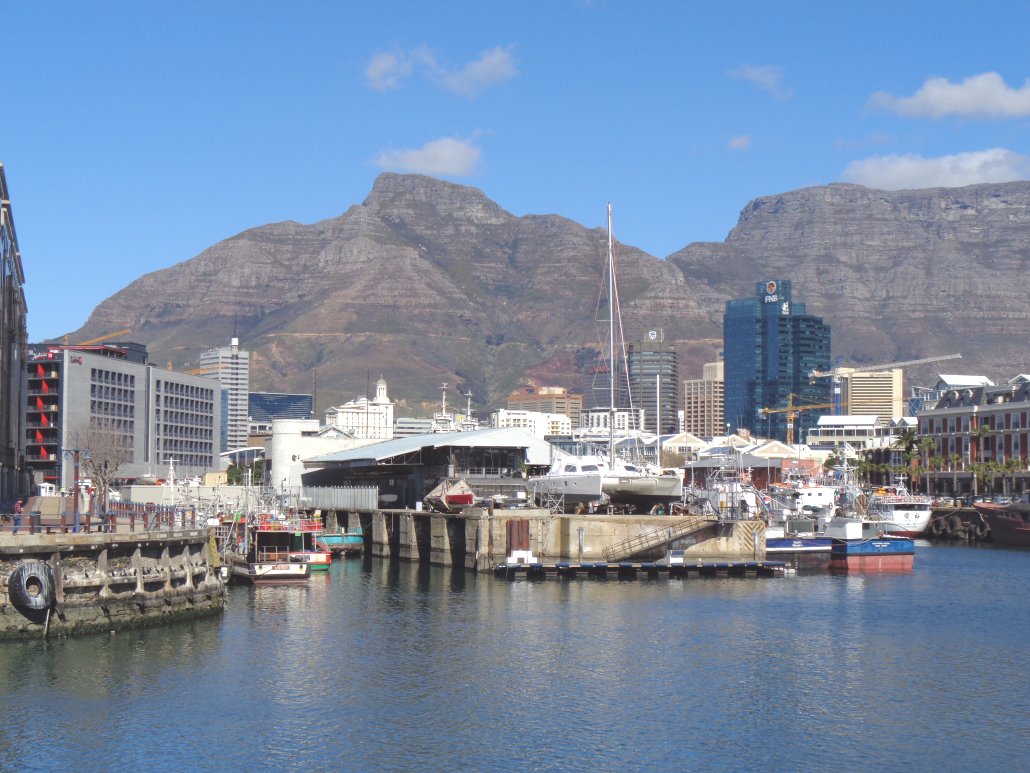
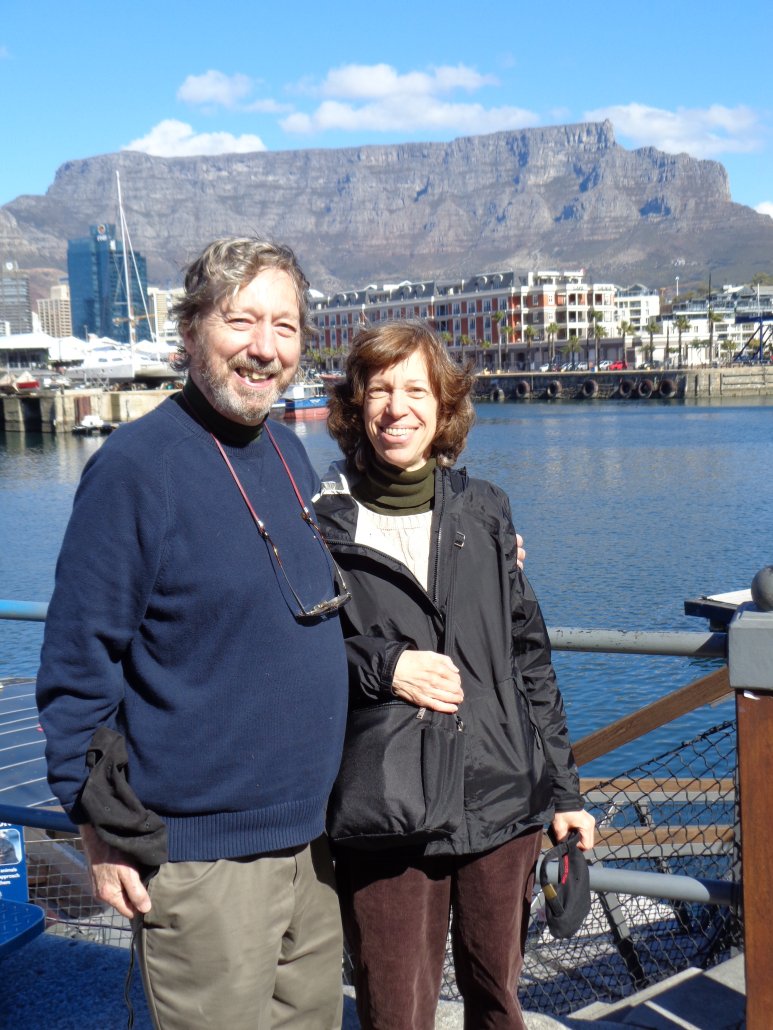
Near Cape Town is Kirstenbosch, a gorgeous botanic garden filled with species native to southern Africa. The large bird with the colorful head is a guinea fowl.
Ma-amukeriwa! That's "Welcome!" in Shangaan, one of the 11 official languages
spoken in South Africa. Judy and I recently returned from three weeks in that
fascinating, complex, beautiful country, and I'm happy to be able to share some
of our experiences with you.
For those who might think about visiting, I'll begin with two tips: First, this
is a bigger country than it might first appear to be on a map; even in three
weeks, we were really
only able to see a few highlights. It's also a long trip to get there; we
connected through Amsterdam, and the time from our door to Cape Town was 27
hours. Bad News/Good News: The airfare is usually steep, but, if you can afford
that, food and lodging are good value-for-money. The people are uniformly
friendly, and we were clearly welcome.
Cape Town is still very much a working port, though the Victoria & Alfred ("V &
A") waterfront has been well-developed as a tourist attraction. We are here,
with Table Mountain in the background.


Near Cape Town is Kirstenbosch, a gorgeous botanic garden filled with species
native to southern Africa. The large bird with the colorful head is a guinea
fowl.

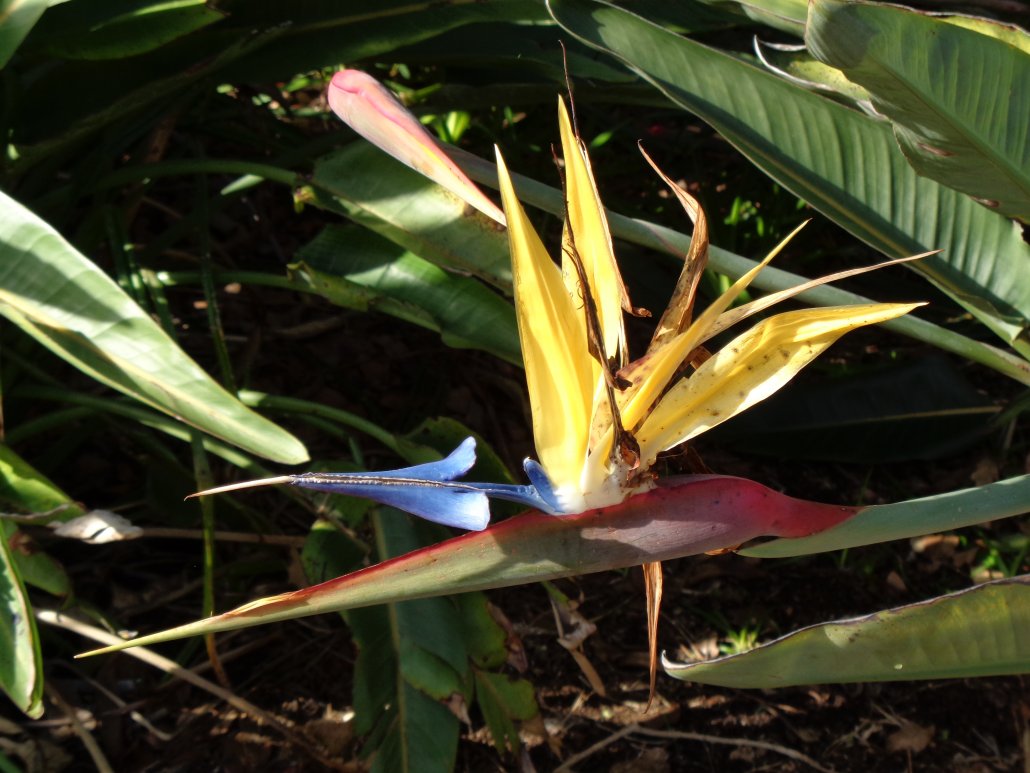
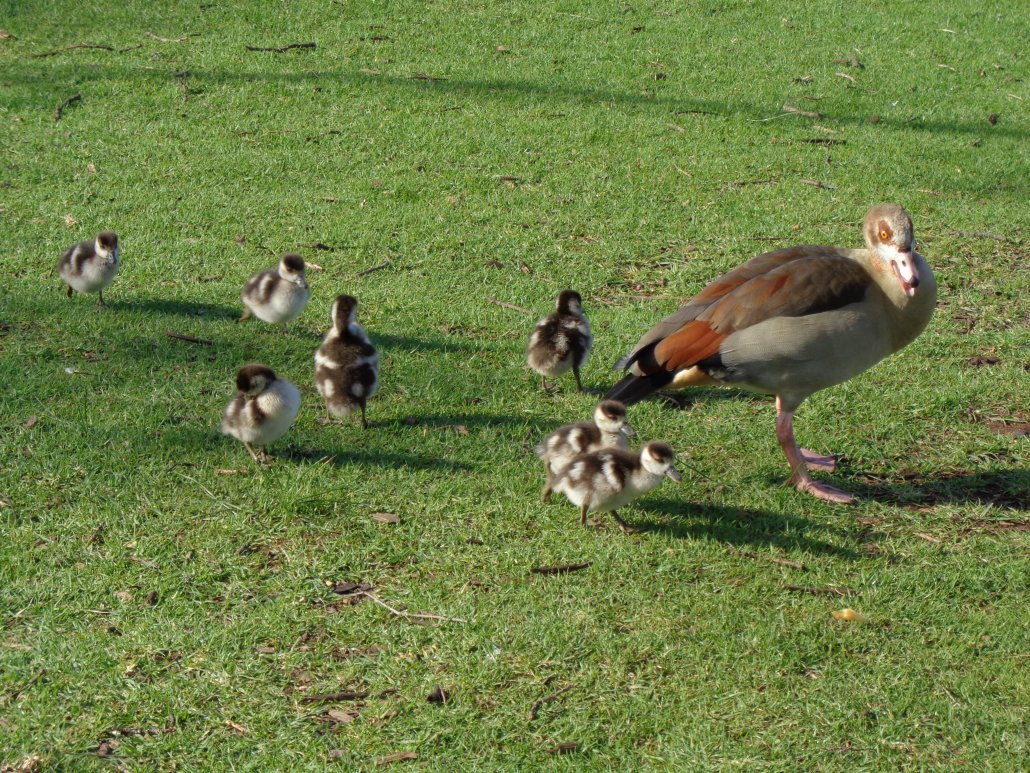
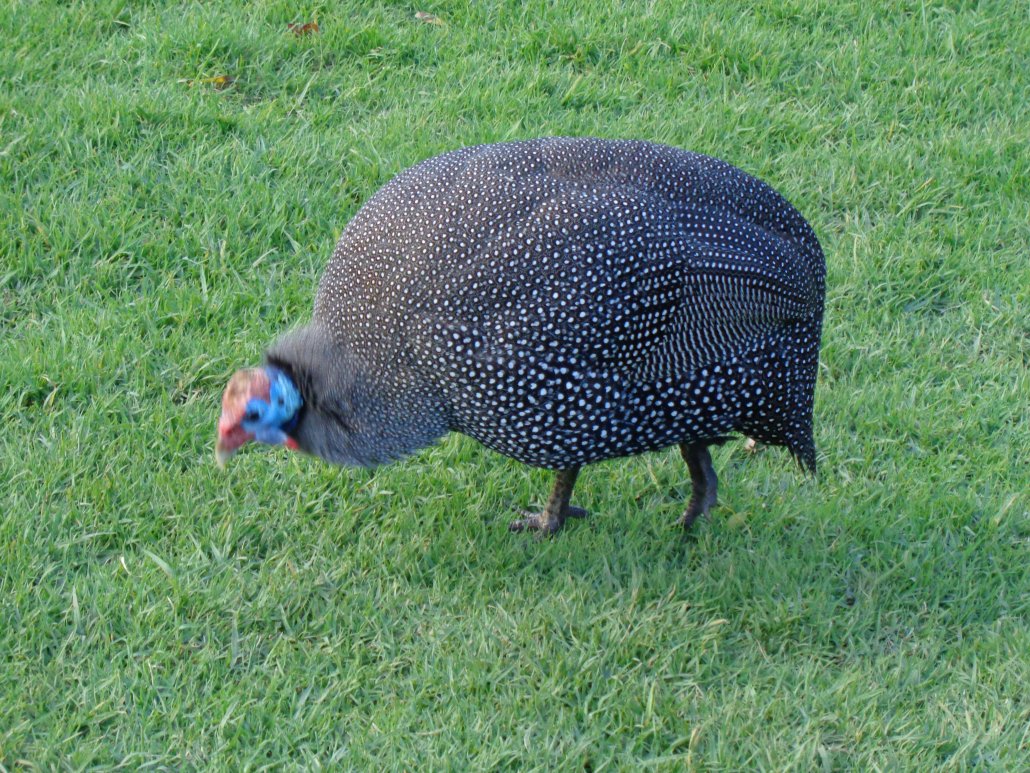
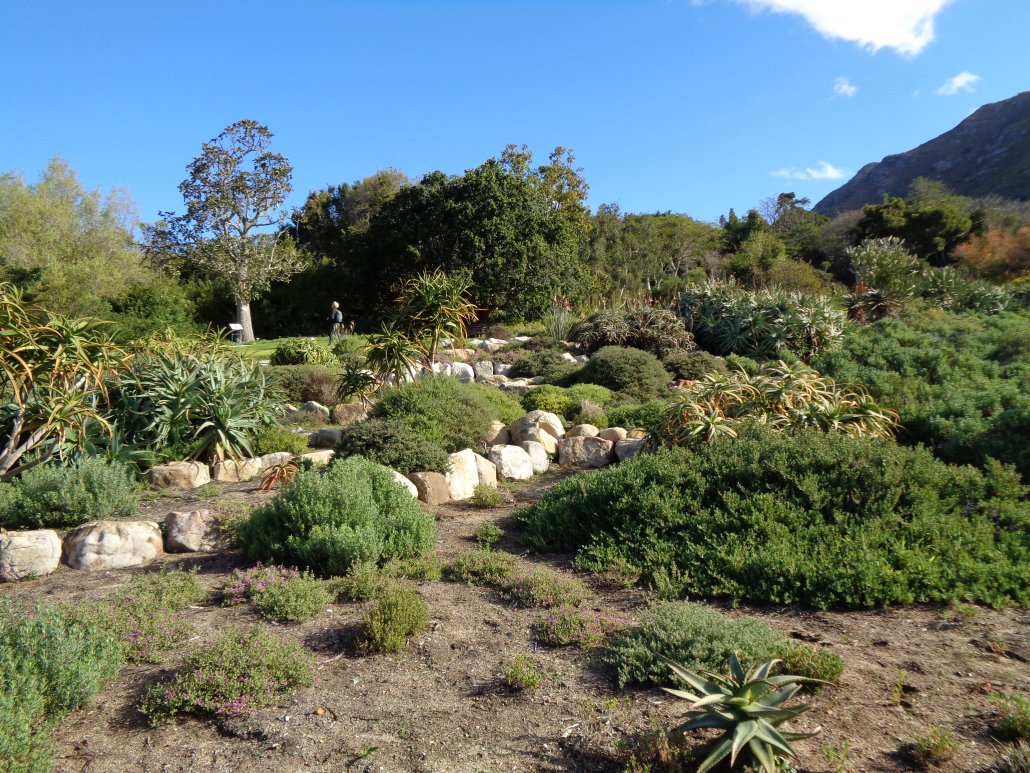
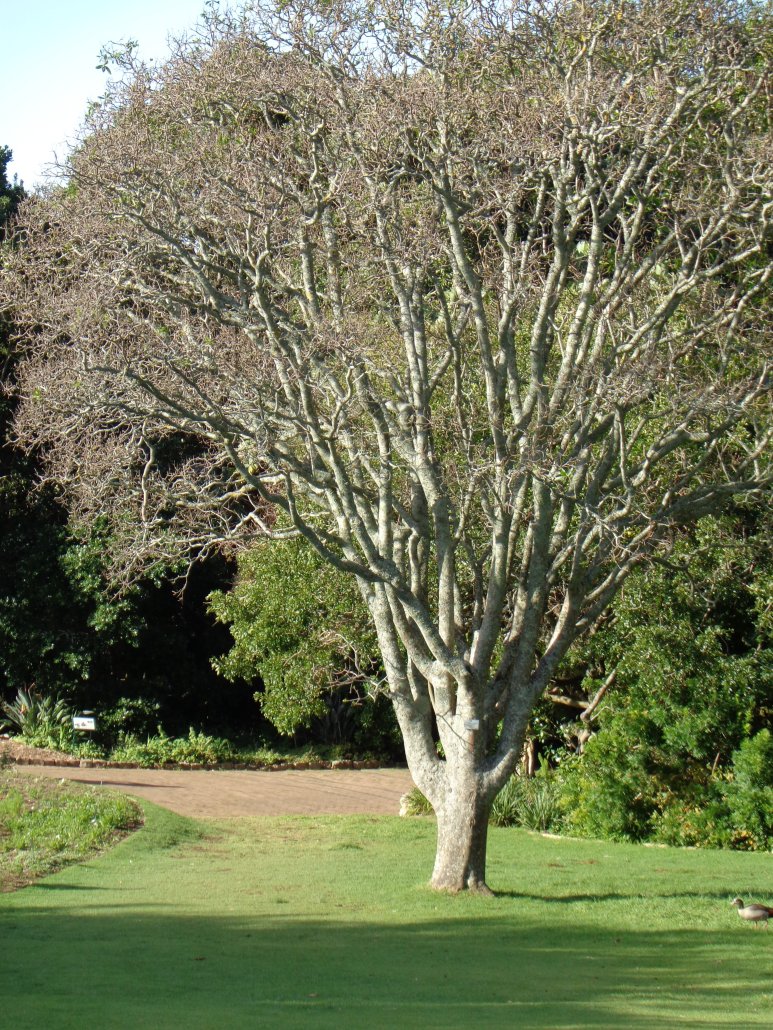
Every visit to South Africa has to include a tour of Robben Island, the prison off the coast of Cape Town, where Nelson Mandela spent 18 years. Other people have described this visit as sobering, and so I found it to be. The third pic in this section is of a separate cabin/cell that the government maintained for Robert Sobukwe; he was a pan-African separatist whom the government considered too dangerous to have contact with the general population. In my reading, Mandela's vision of an inclusive society won a temporary truce, but only after a thirty-some year struggle--both political and armed--with the Nationalists. In my view, it took the Europeans that long to realize that the cost of maintaining control by armed force would be too high in both people and treasure. My takeaway is that when you are negotiating for the highest of stakes, resolution can take a long, painful time. And that's when the adversaries actually come to trust each other some. The last three pics in the sequence are: a guide (all of the guides in the prison are former political prisoners); the garden area where Mandela and his comrades buried copies of his manuscript, and Mandela's cell.
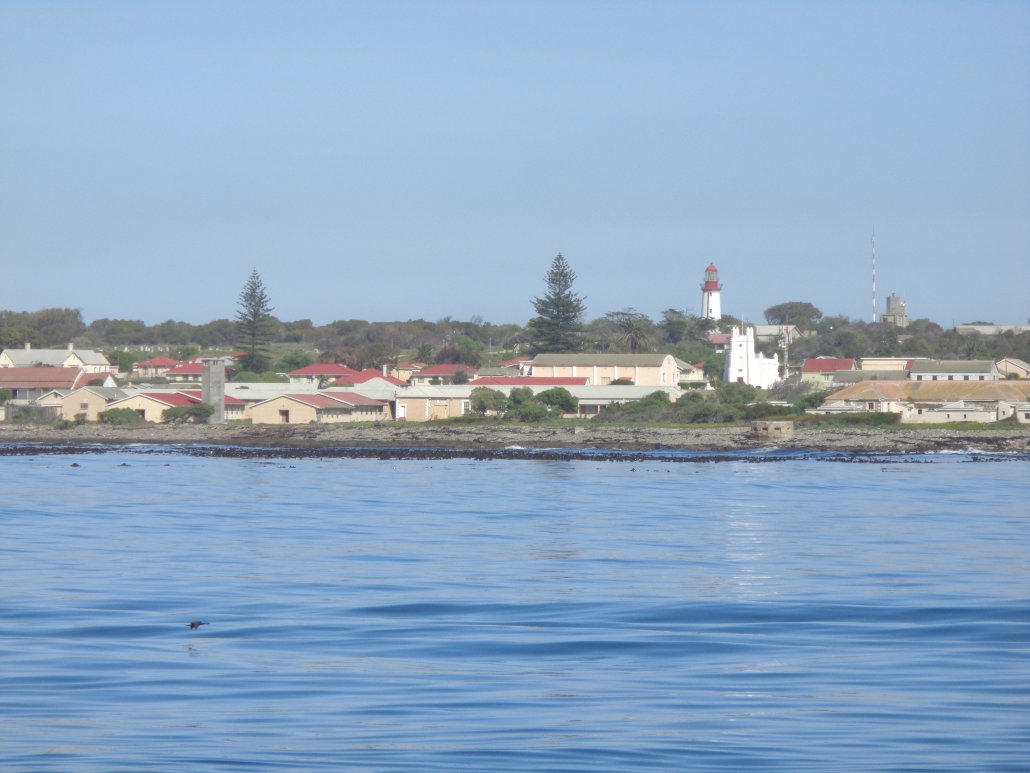
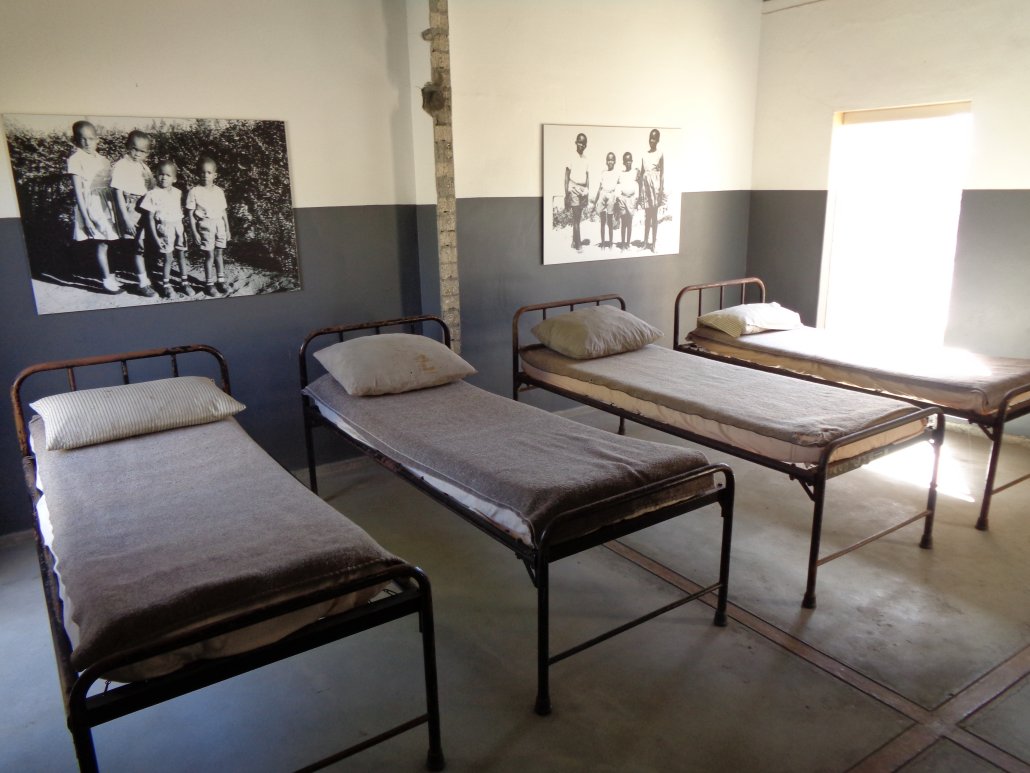
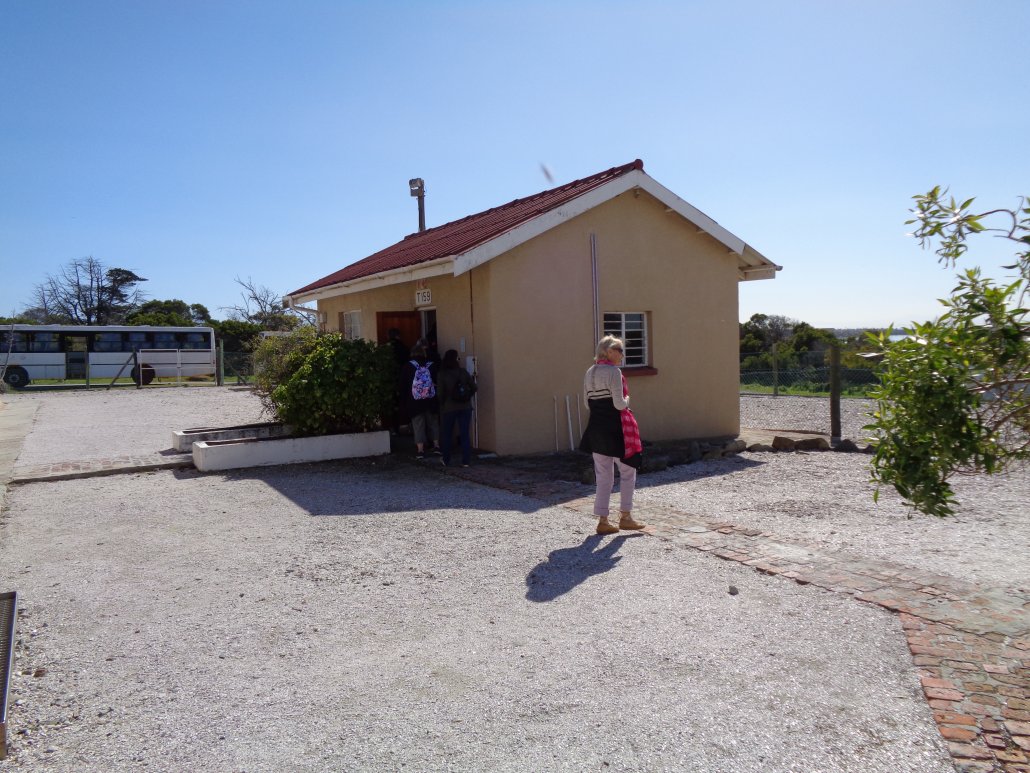
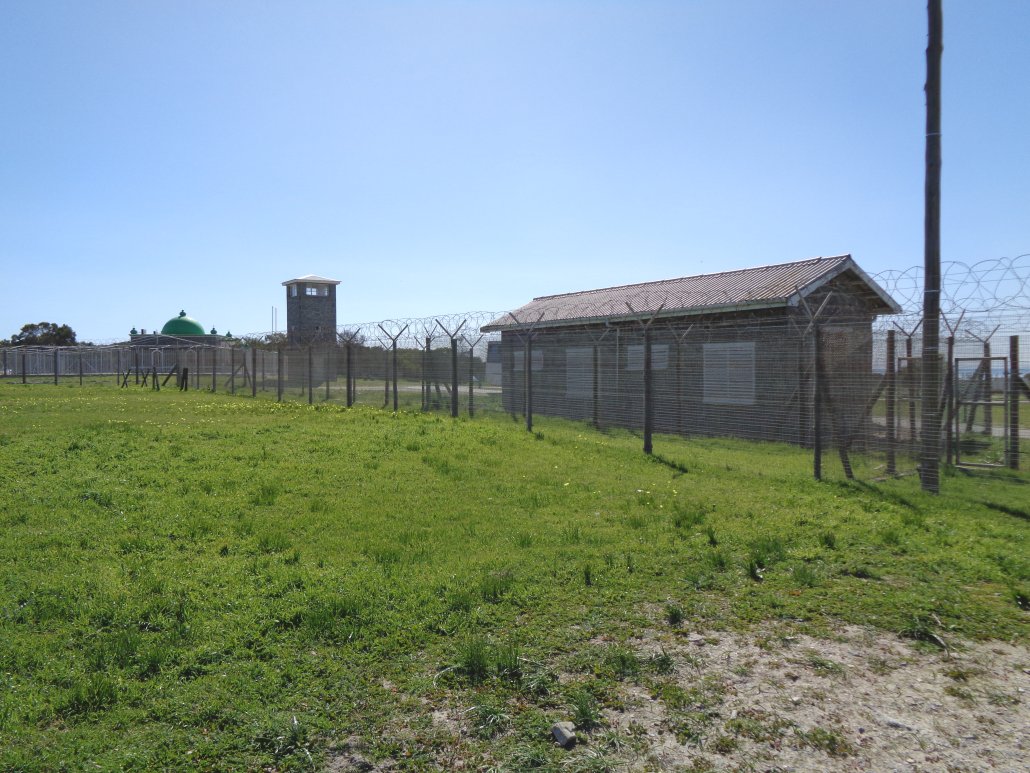
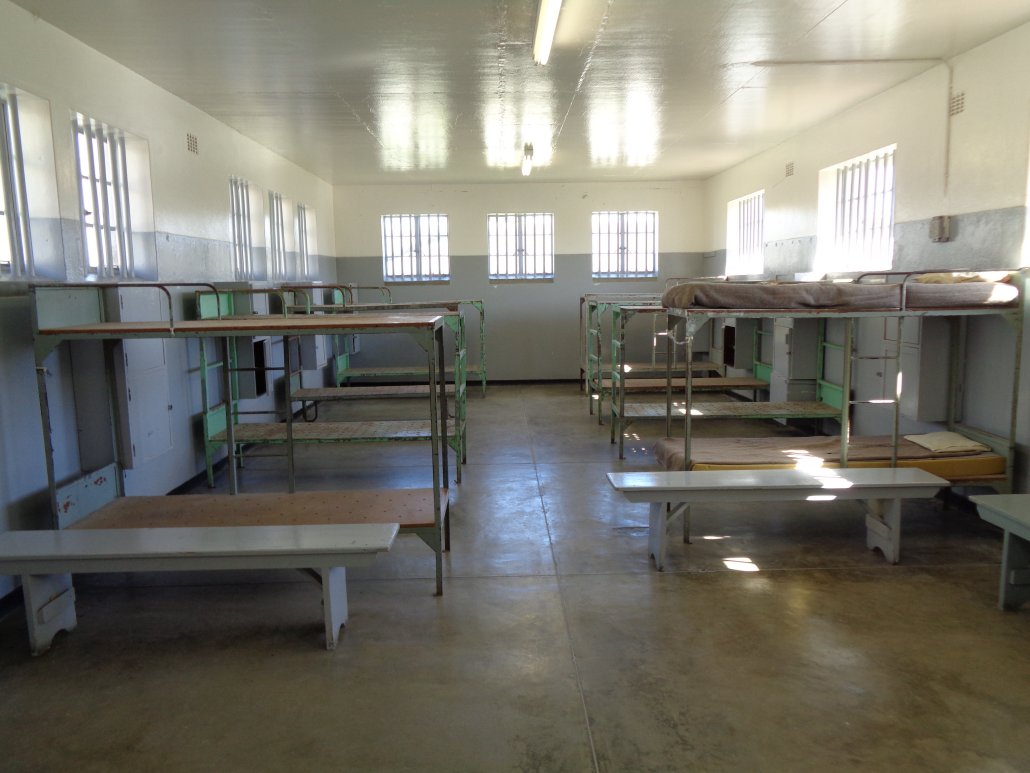
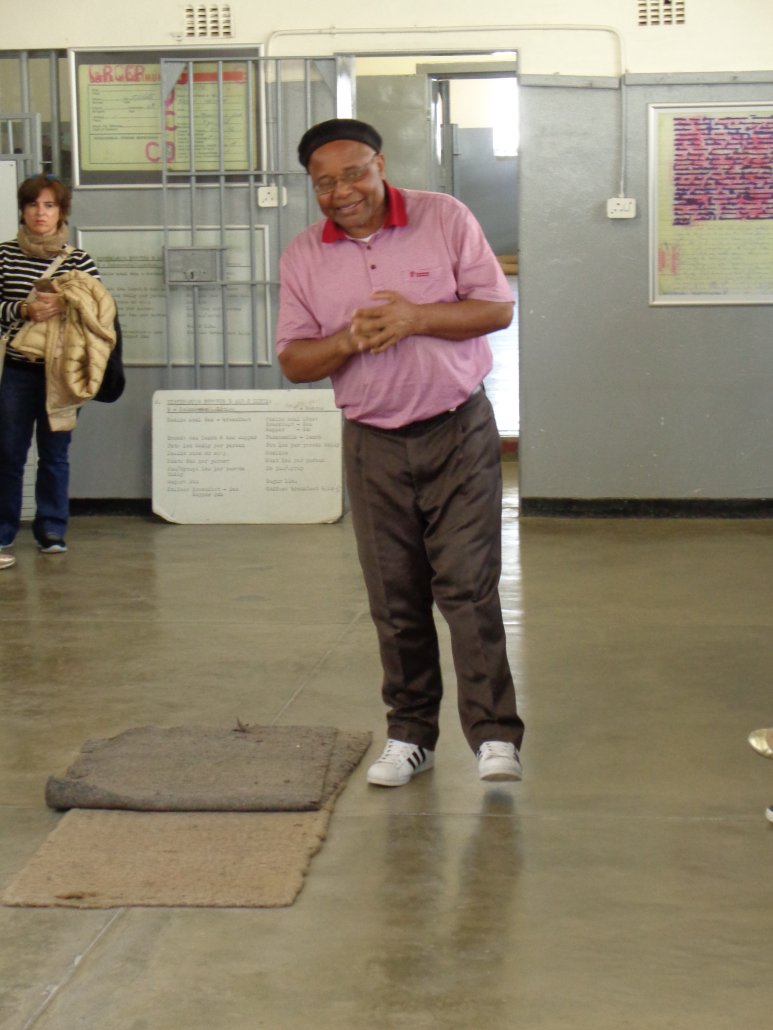

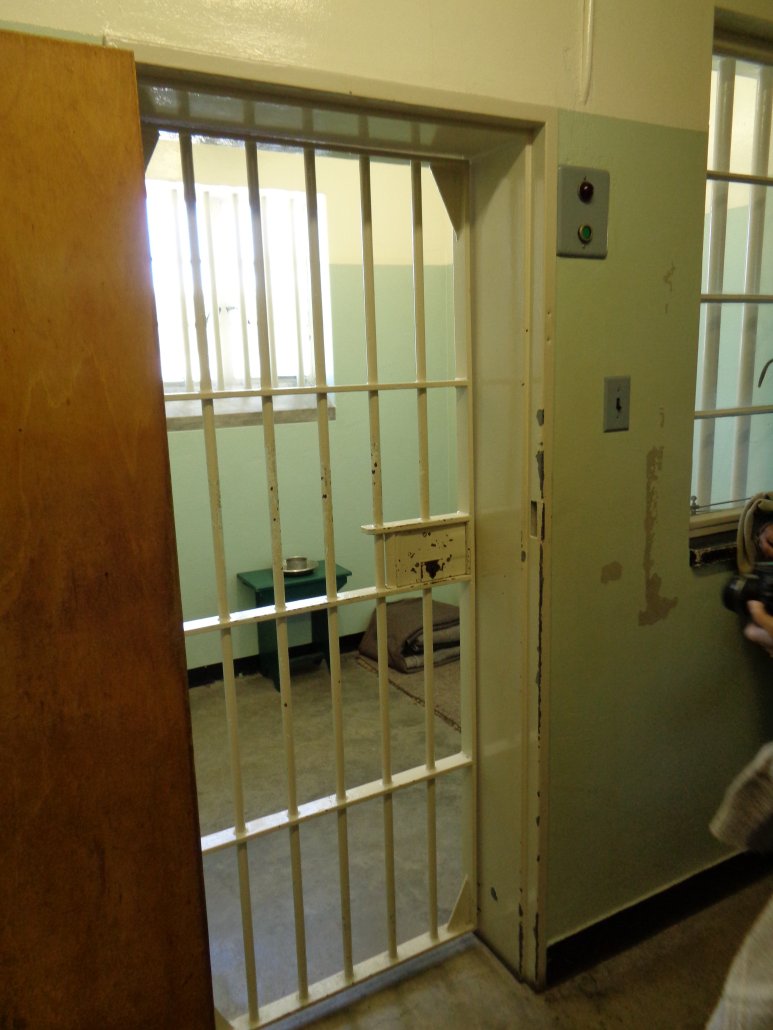
The cable-car ride up Table Mountain has been popular with tourists since it
opened in 1929. We were lucky to be able to get tickets, because shifting winds
often force the operators to cancel trips for safety reasons.
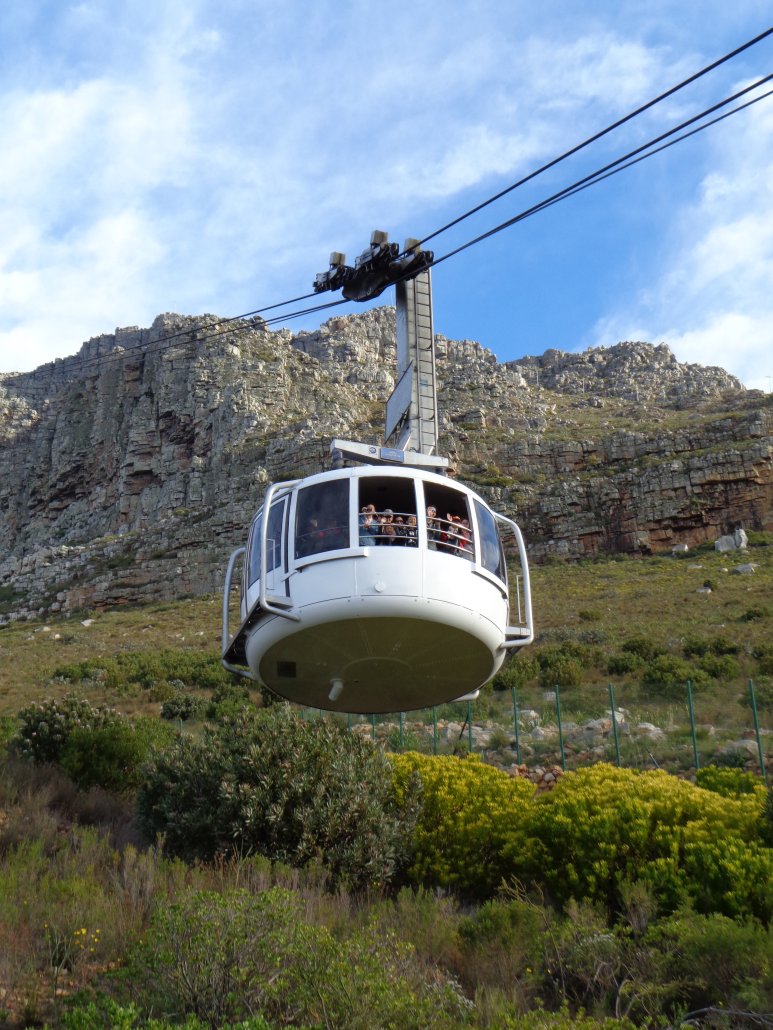
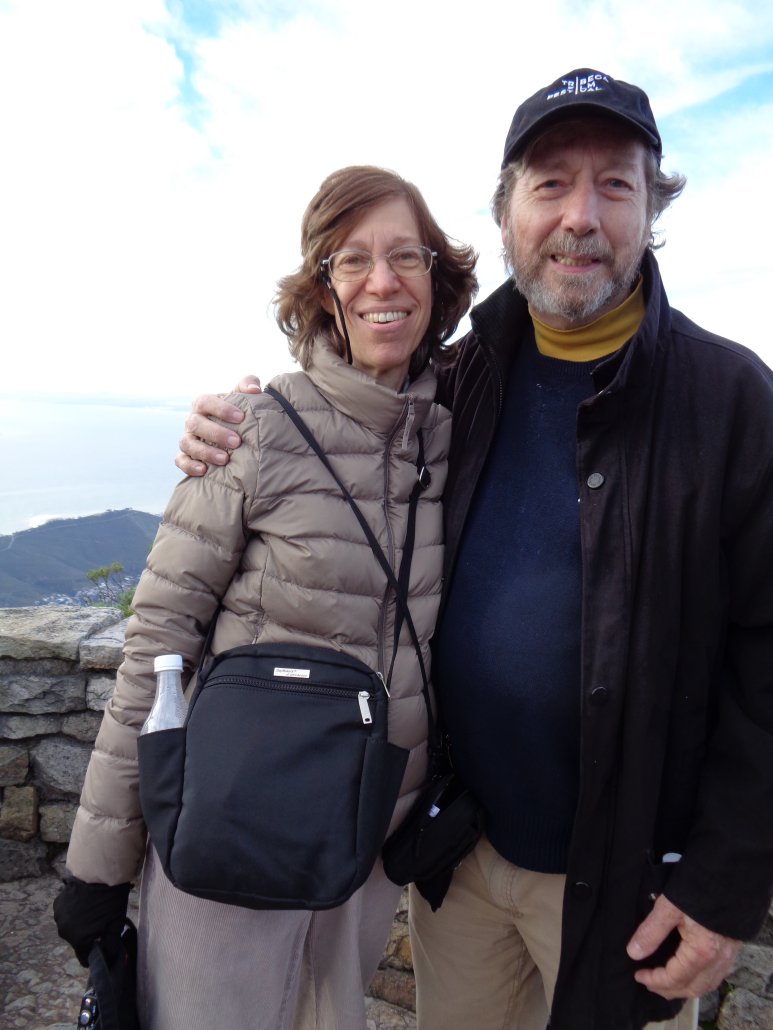

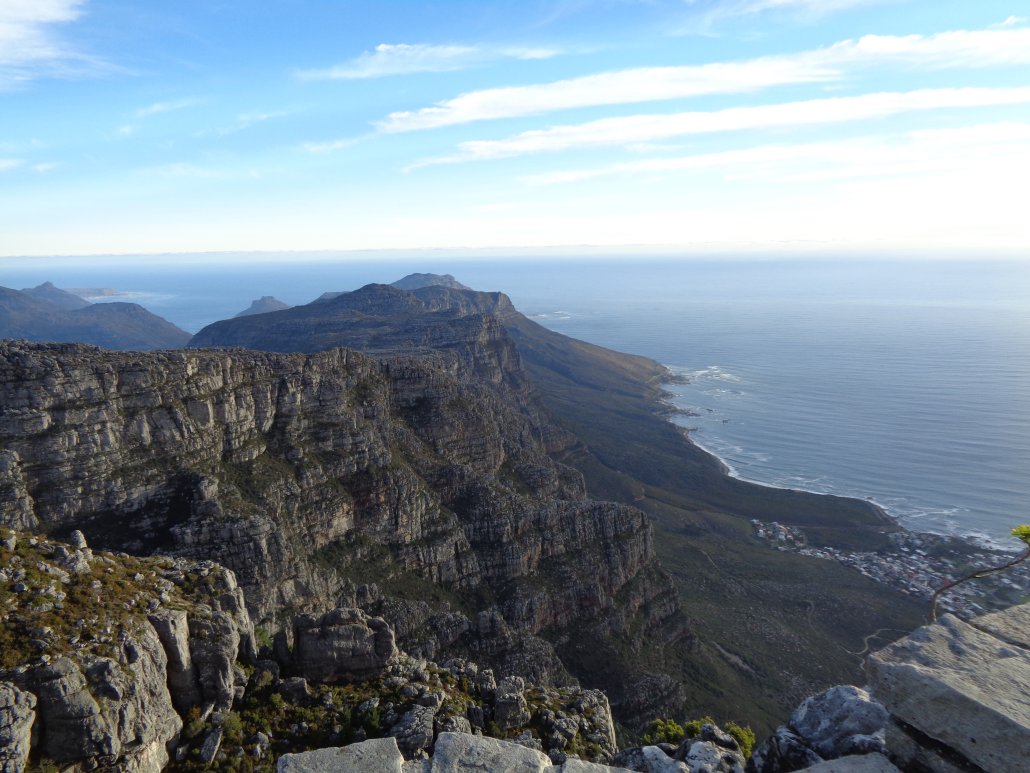
You can't mingle with them, because their section of Boulders Beach is fenced
off, but the African penguins here are fun to watch. Wild ostriches are common
on the coast road down to Cape Point.
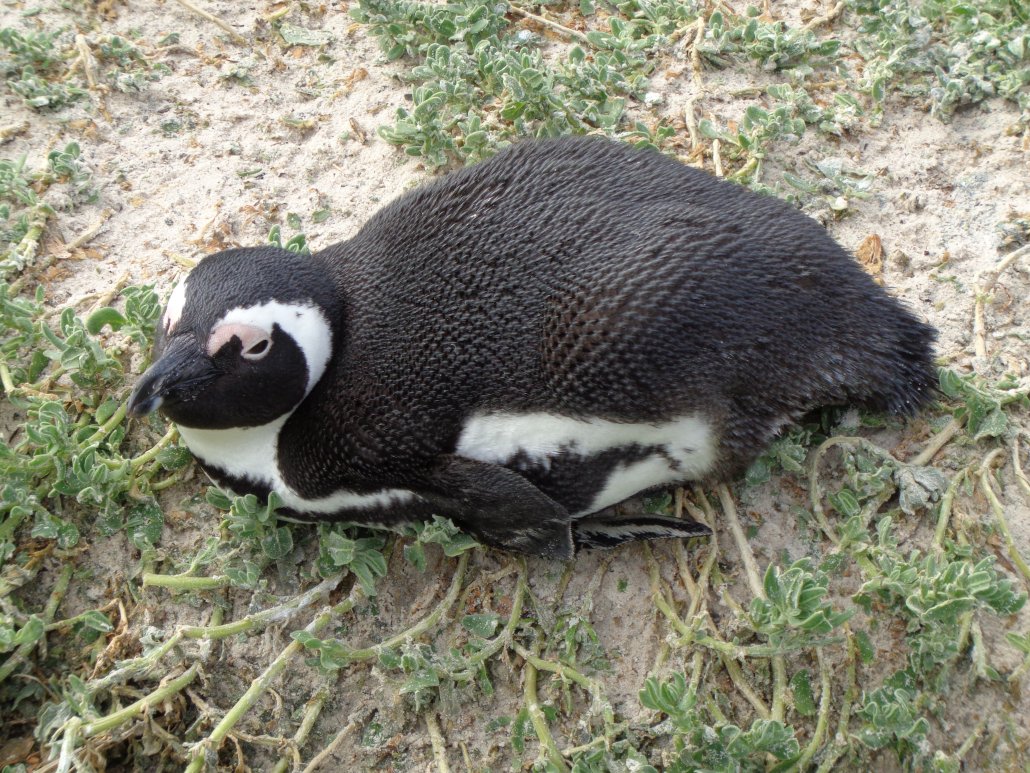
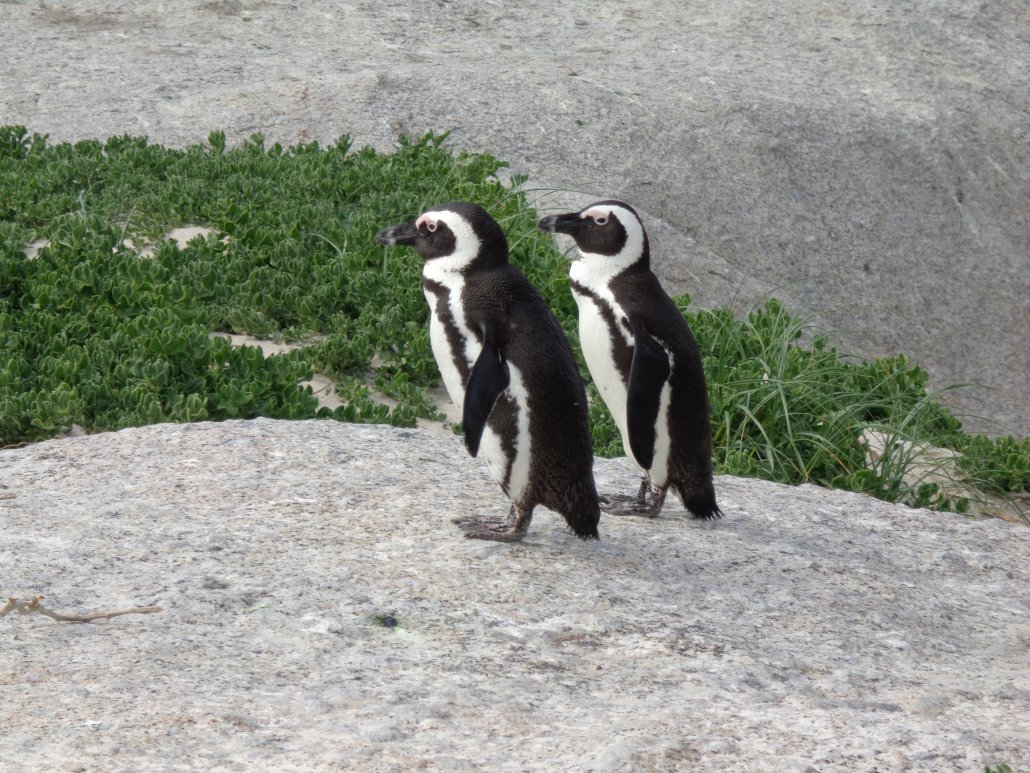

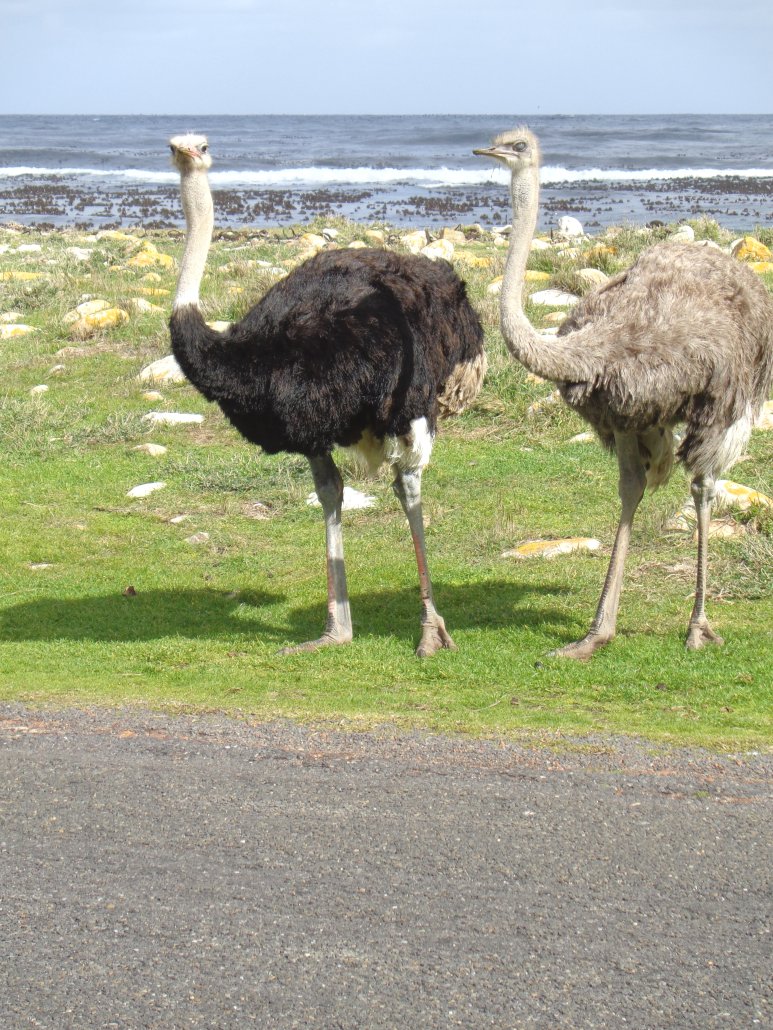
I have spoken previously of visiting the Cape of Good Hope and Cape Point and
meeting my Human Resources manager. All kidding aside: If you visit, be aware
that the Baboons can be aggressive, and they have gotten used to going after
food among people.
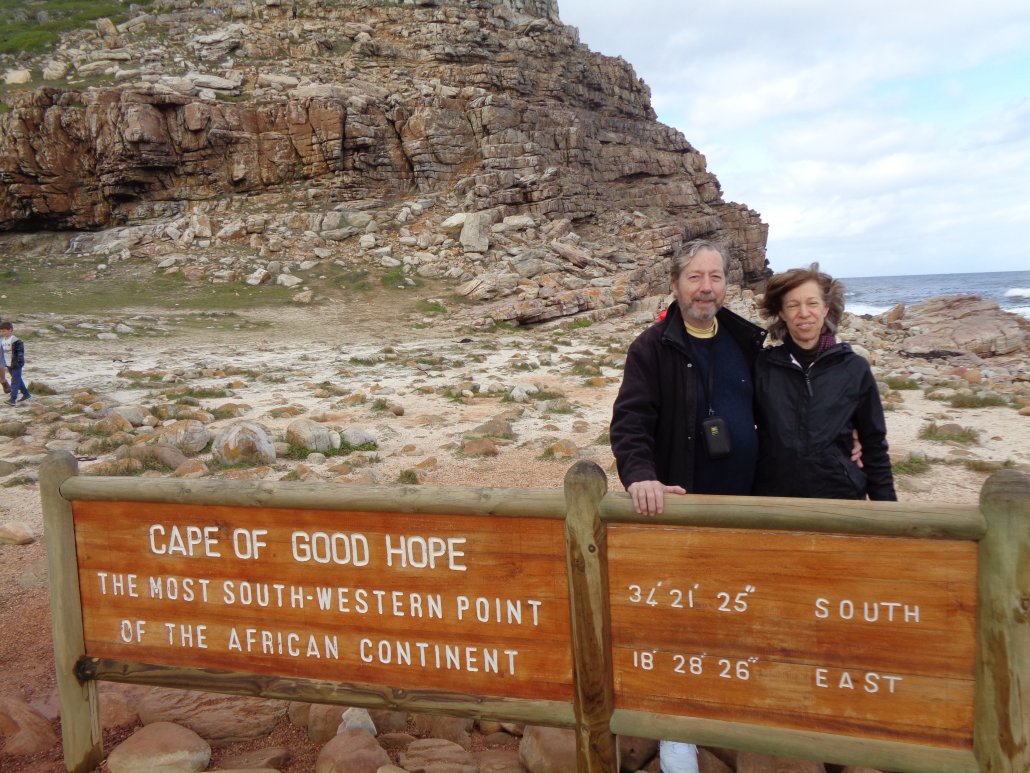
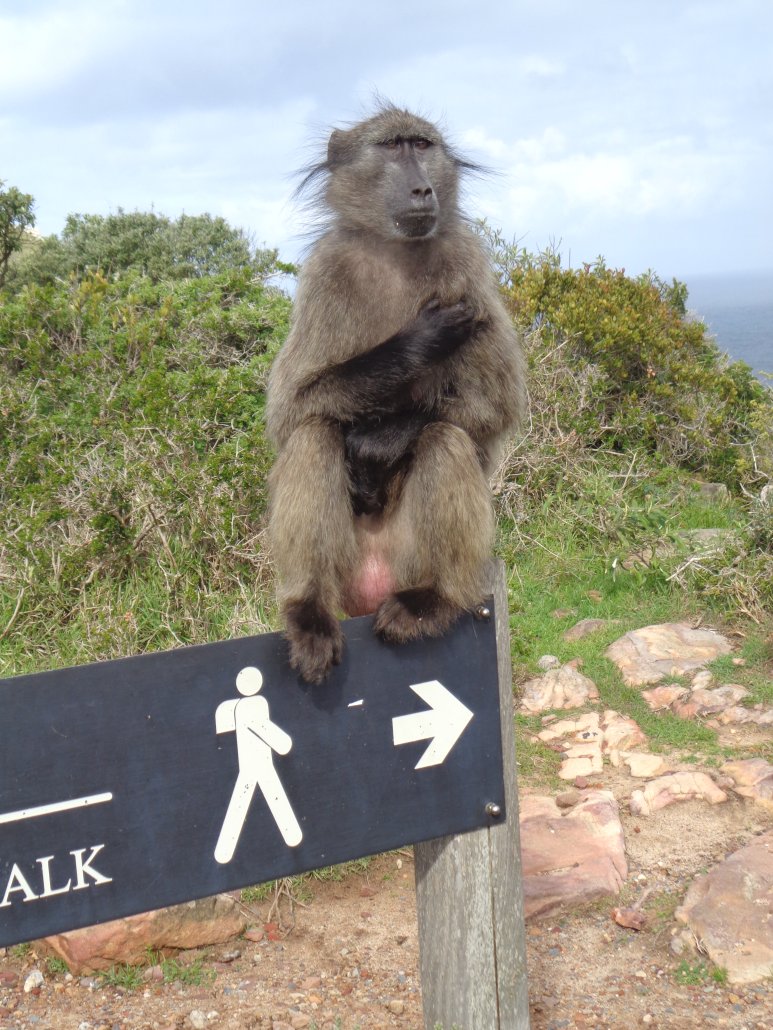
My good spouse is an oenophile, and I have come along for tastings over the
almost 25 years since we met. South Africa has long produced world-class wines,
and the country outside of Cape Town is wall-to-wall with vineyards. Many have
formal gardens. Most have
tasting rooms that are open to the public, and you can sample an amazing variety
of wines, sometimes paired with local cheeses. We started at Fairview and
visited several other properties. Fifth pic: As a reminder of an ugly past, some
wineries have preserved the "Slave Bell" that summoned workers to the
fields.
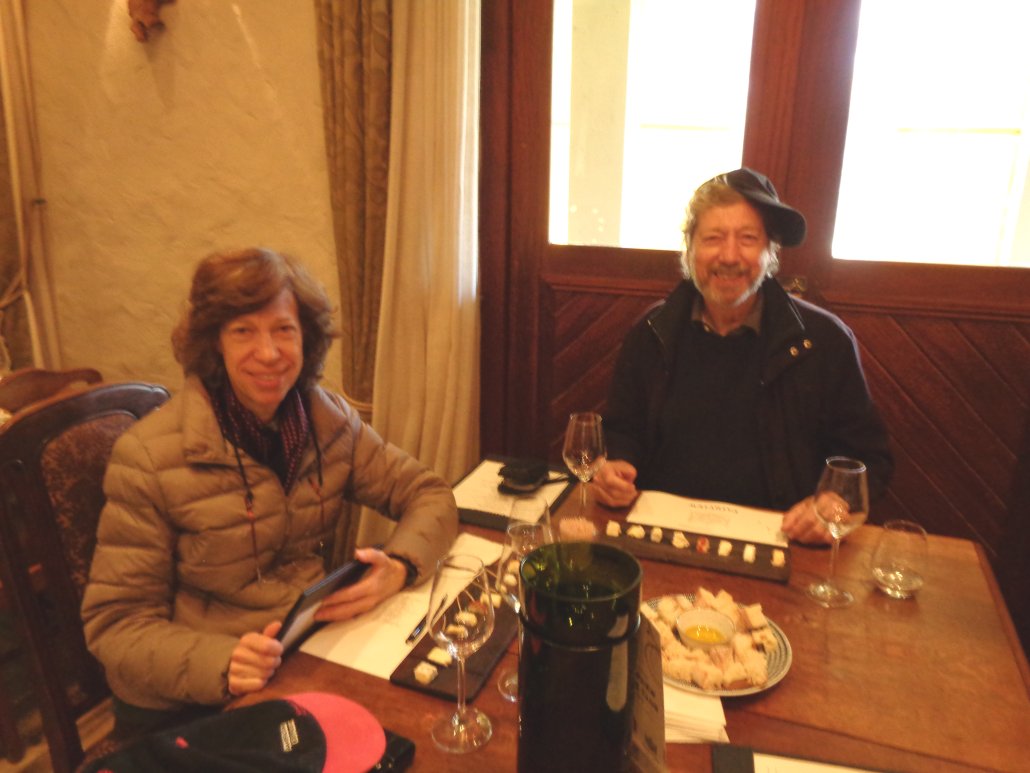

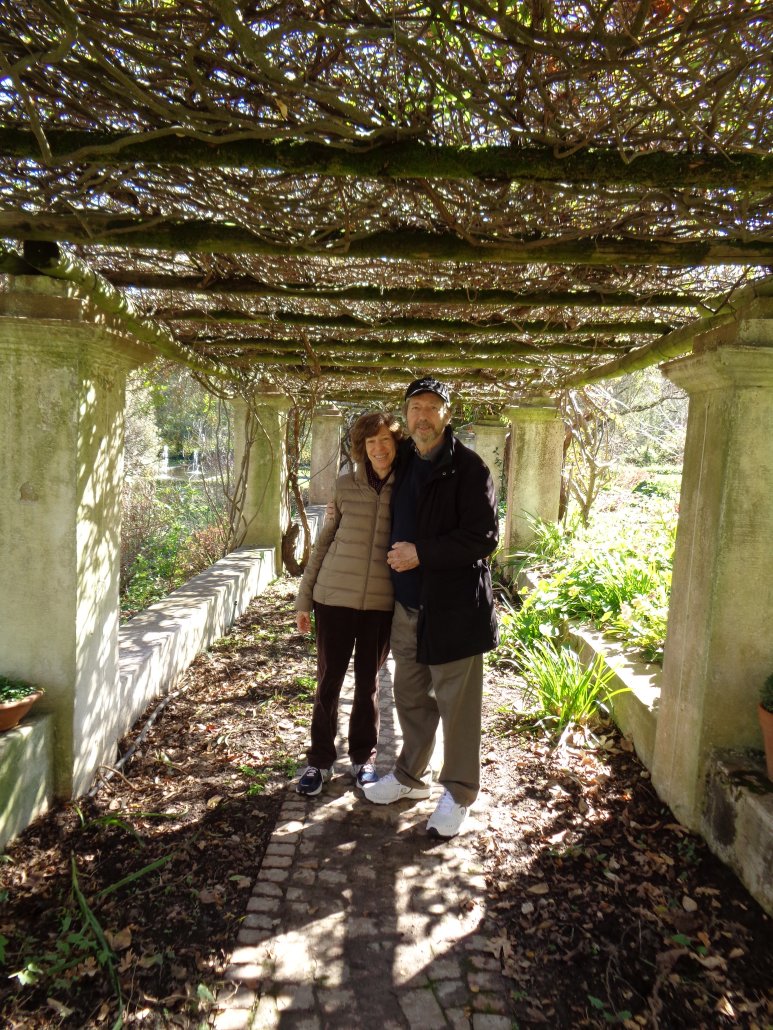
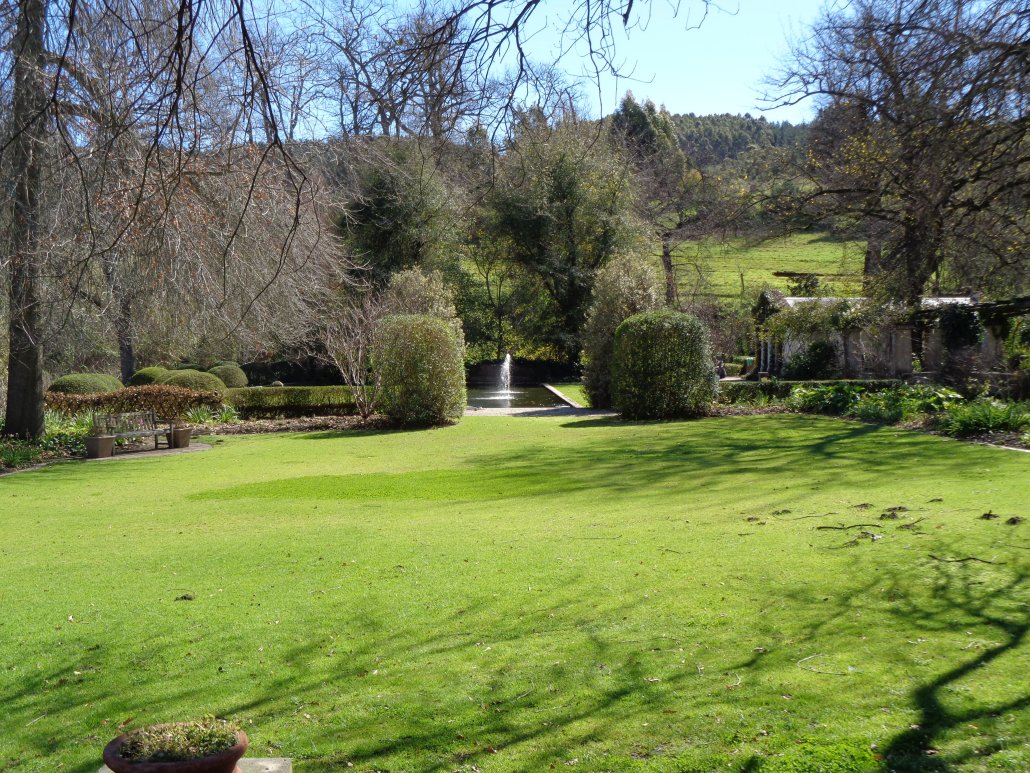
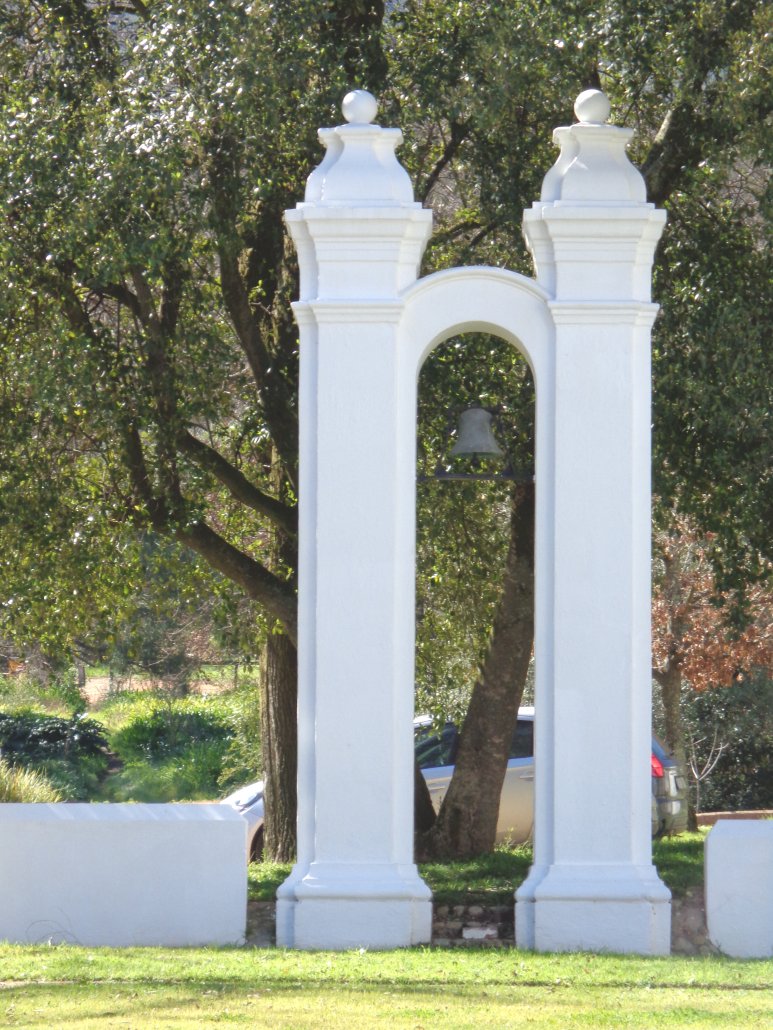
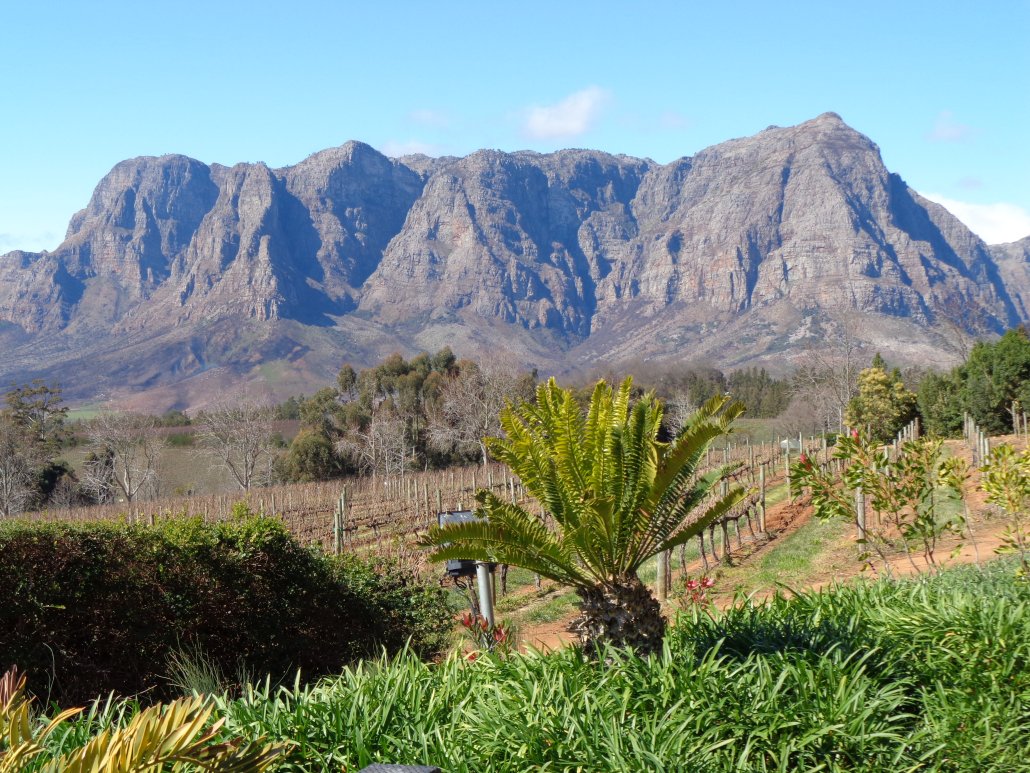
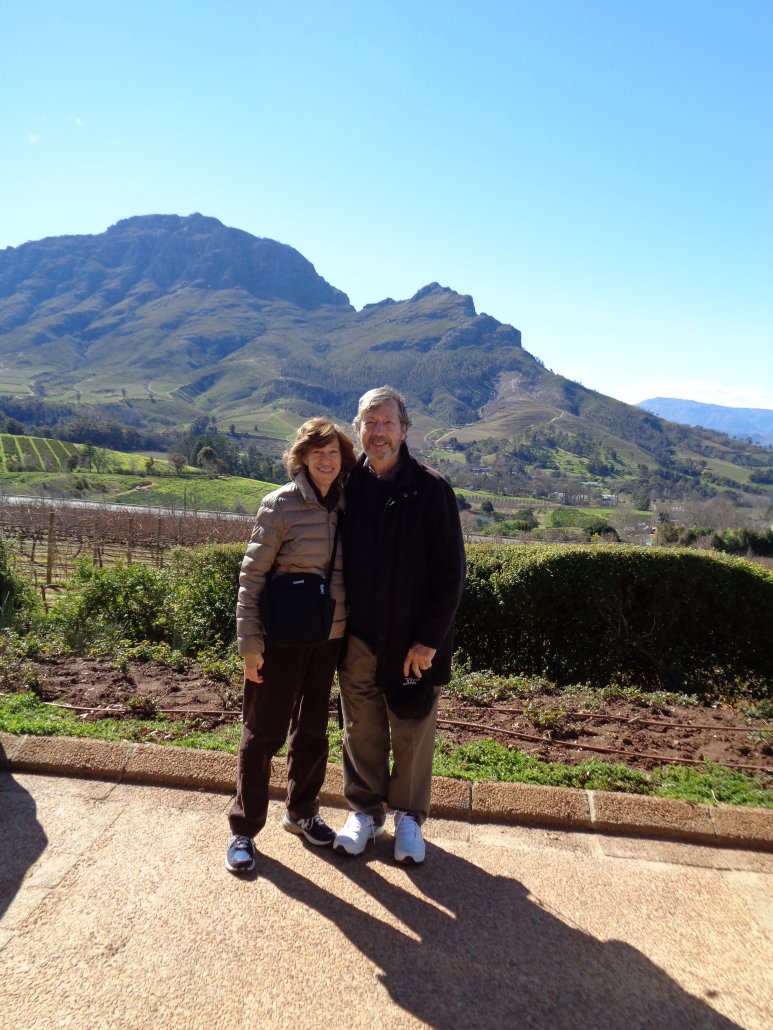
I chose to rent a car and drive up the eastern coastal side of the country,
through some less-traveled places. Cattle-raising is big in the rural areas,
and it was important to look out for livestock crossing the highway. The parched
appearance of the grassland reflects that we were traveling at the end of South
Africa's winter, which is their dry season. The grass will get green and lush
when the rains come in Spring/Summer.
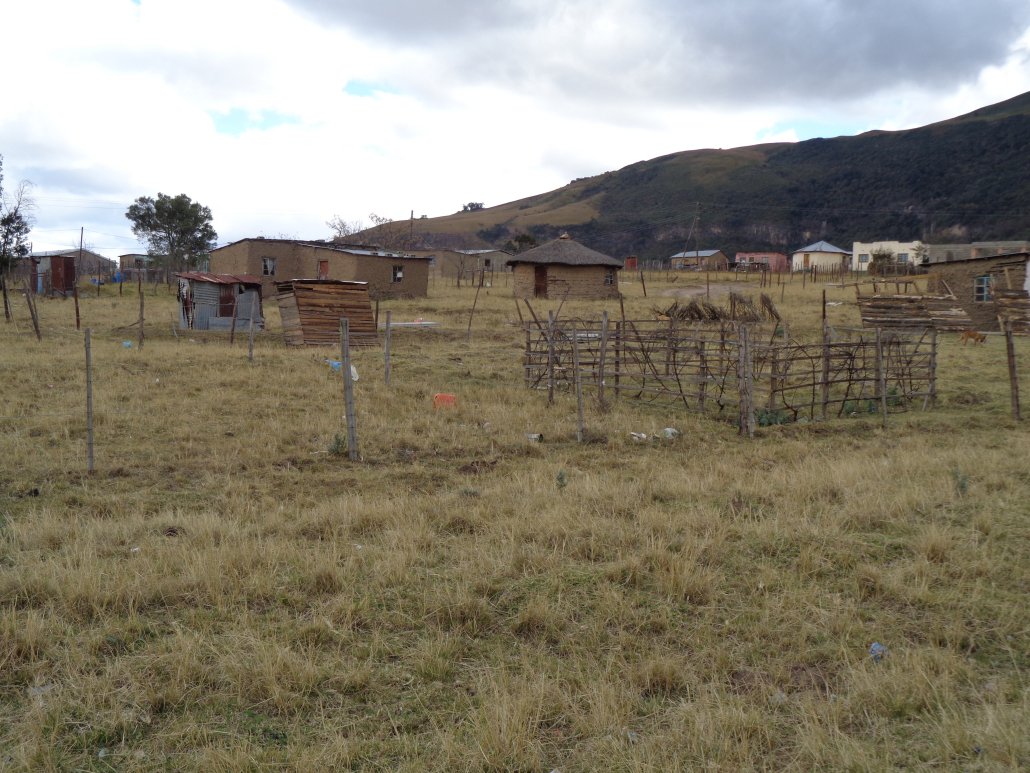

When planning our route from Cape Town to Durban, I was thinking more about
reasonable driving distances between stops and not as much about where to eat.
As it turned out, two of the places where we stayed, Prince Albert and Hogsback,
have become "foodie" destinations, owing to great local produce and chefs who
have taken good advantage; meals we had at Nutwoods Park in Hogsback easily
equaled what we are accustomed to at good places in Brooklyn, at far lower
cost. Nutwoods, now a guesthouse, was built in the 1930s by an Englishman who
wanted to re-create an English country home.
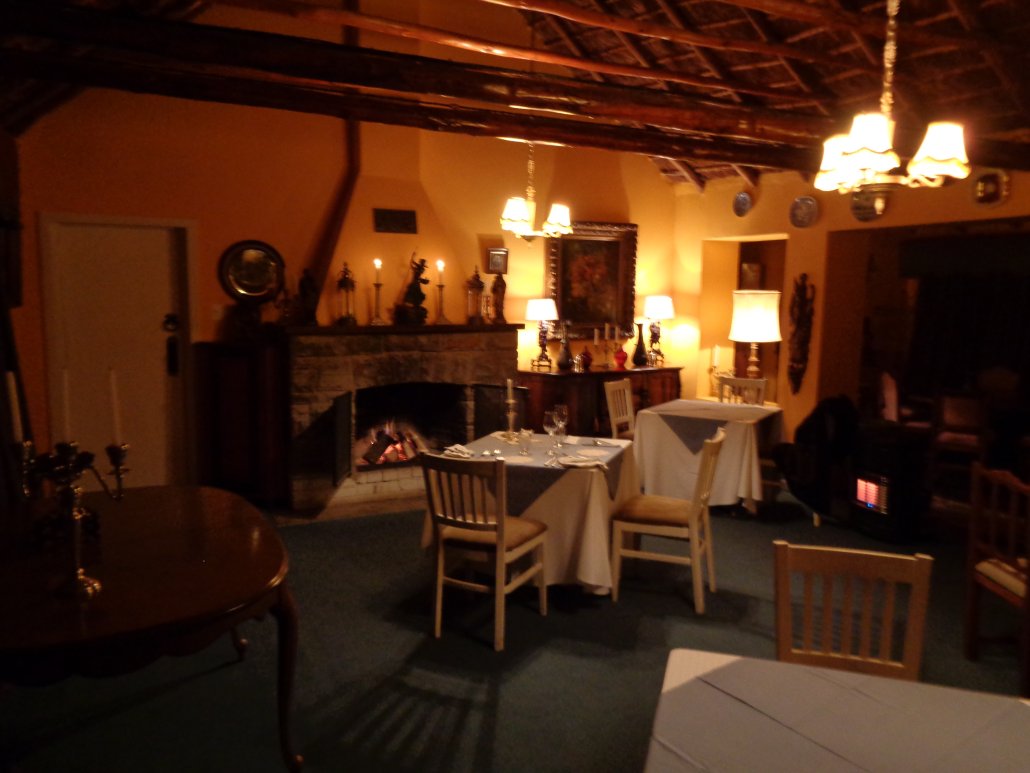
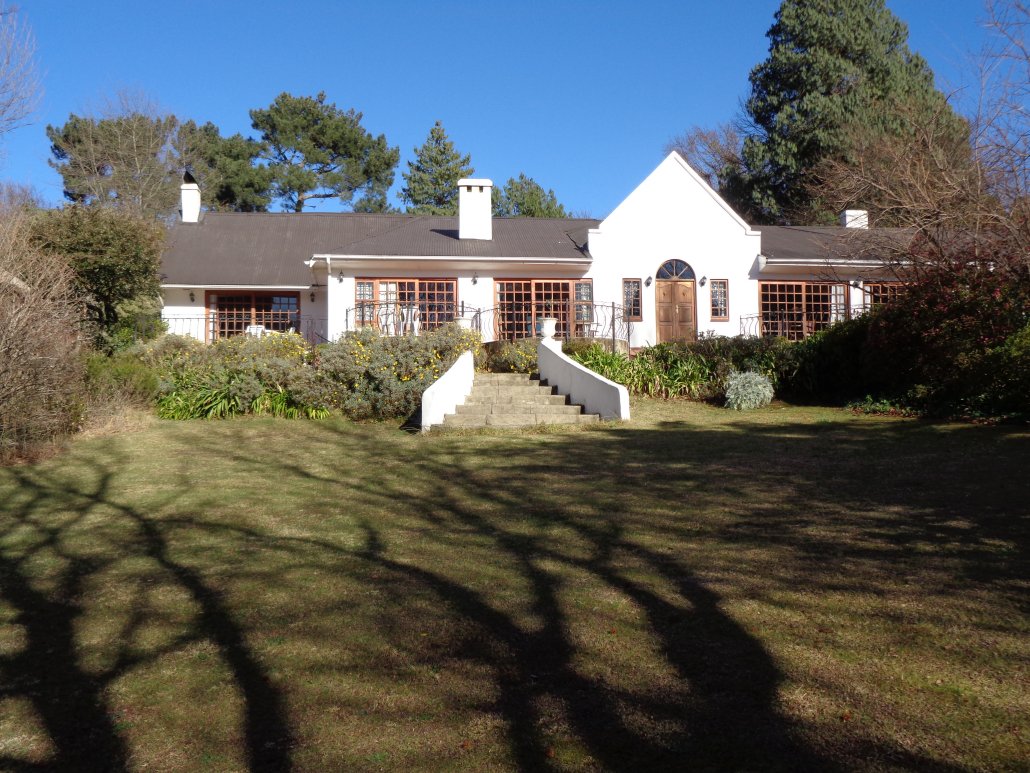
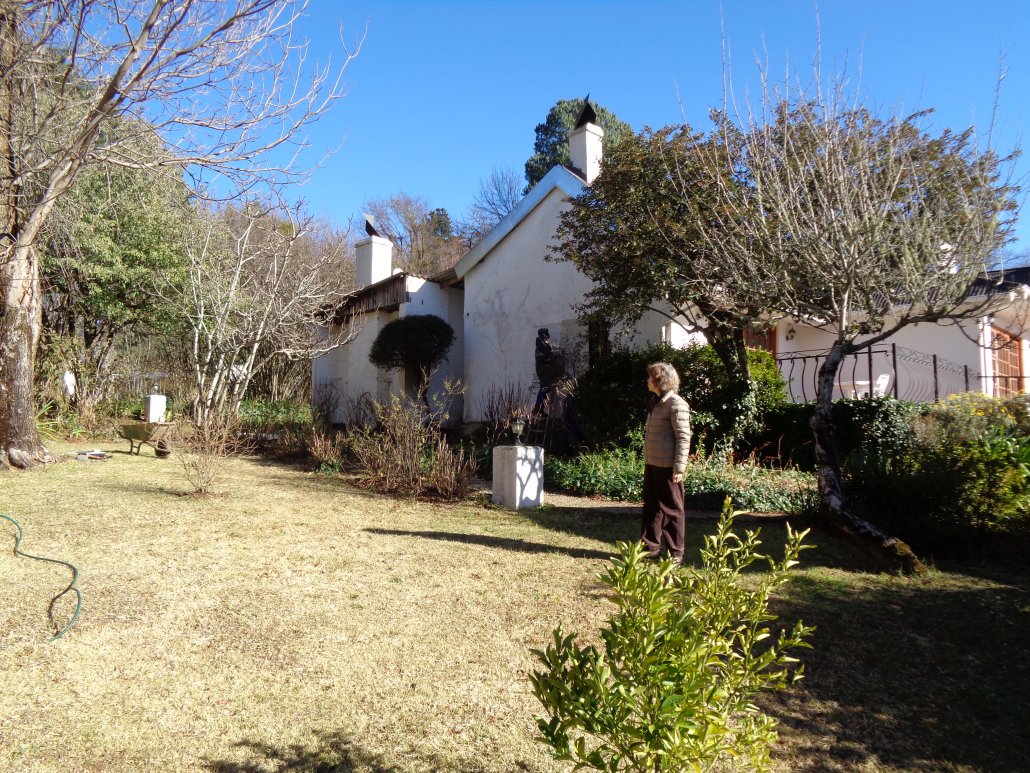

I wish we had had more time in Durban. However, we did get to meet Glen and Liz
Turrell; they were nice enough to take time to show us some of the country in
KwaZulu Natal, and we had a really good Indian dinner in one of the restaurants
for which the city is famous.
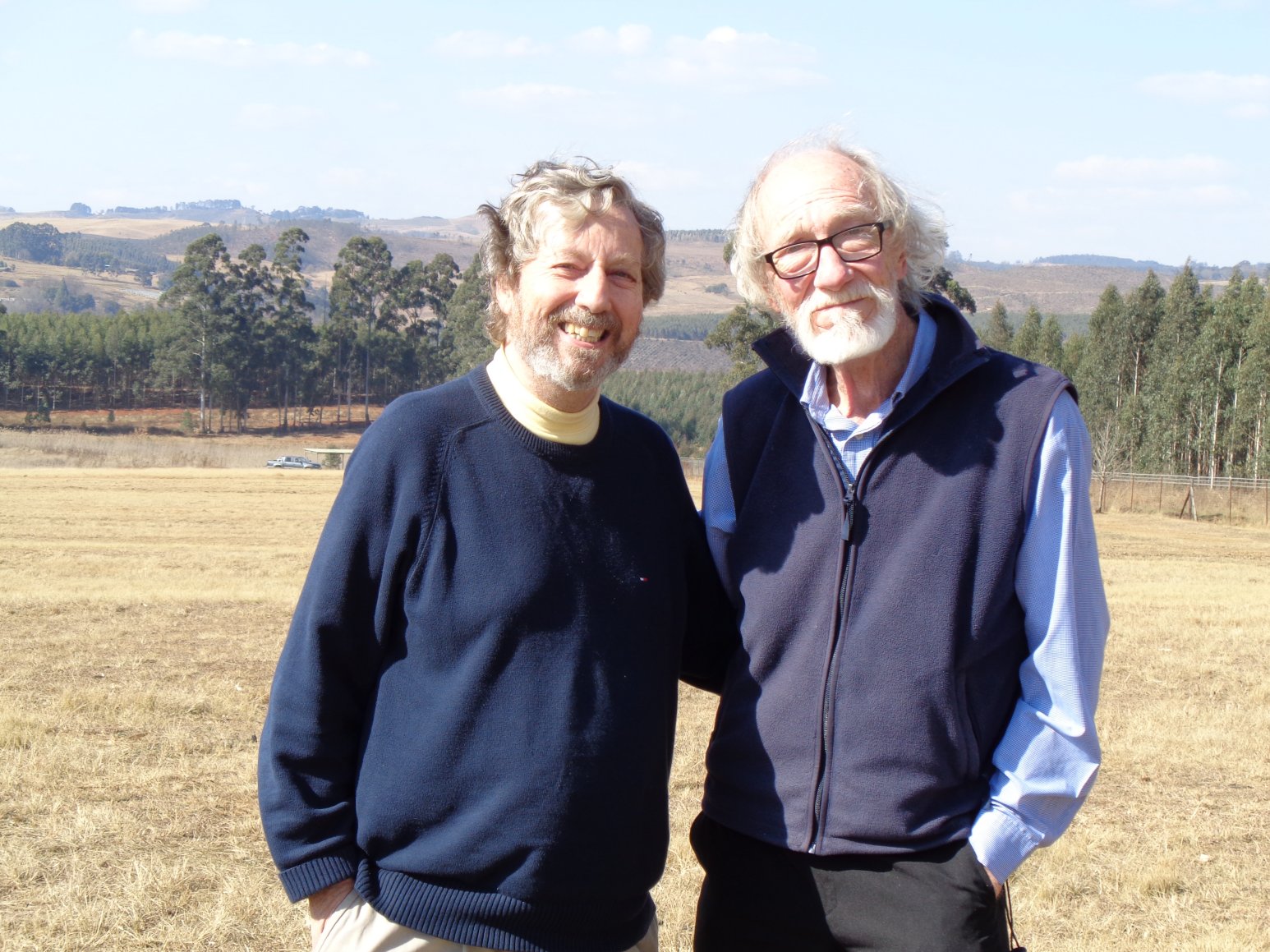
You really wanted to see the animals, right? We flew from Durban to Nelspruit, a small city in the province of Mpumalanga--that's Xhosa for "place
where the sun rises"--and were driven from there to Inyati Bush Camp. This is
one of a number of privately-owned reserves in an area called Sabi Sands. Like
other camps of this kind, it's small--no more than a dozen of these chalets--thatch-roofed cottages, fully set up like hotel suites. But you have to be aware
that the property is not fenced; local residents (that one is a Nyala) can
and do visit. We were cautioned to lock our doors, because the monkeys have
learned how to push down on door handles to get in.
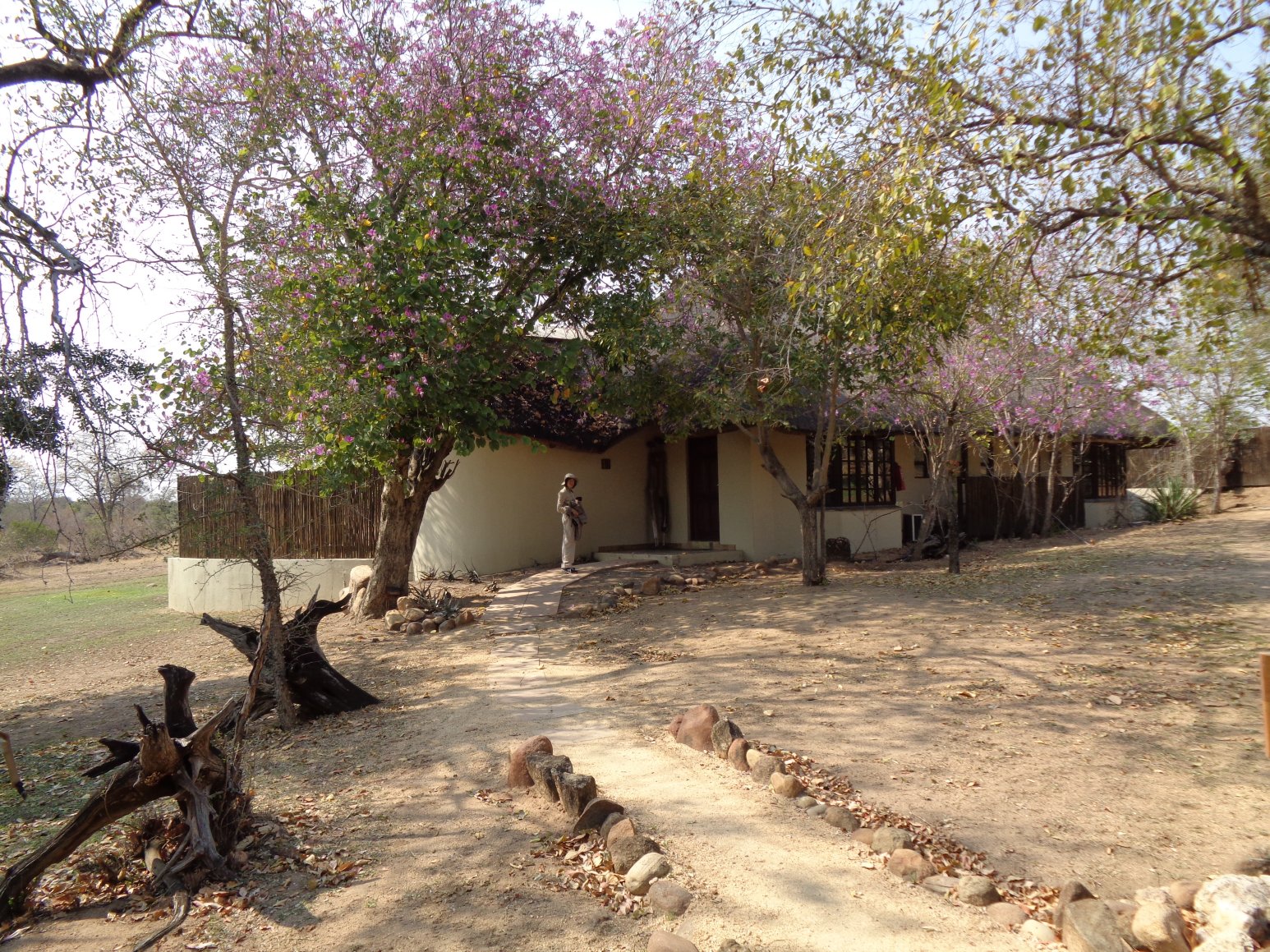

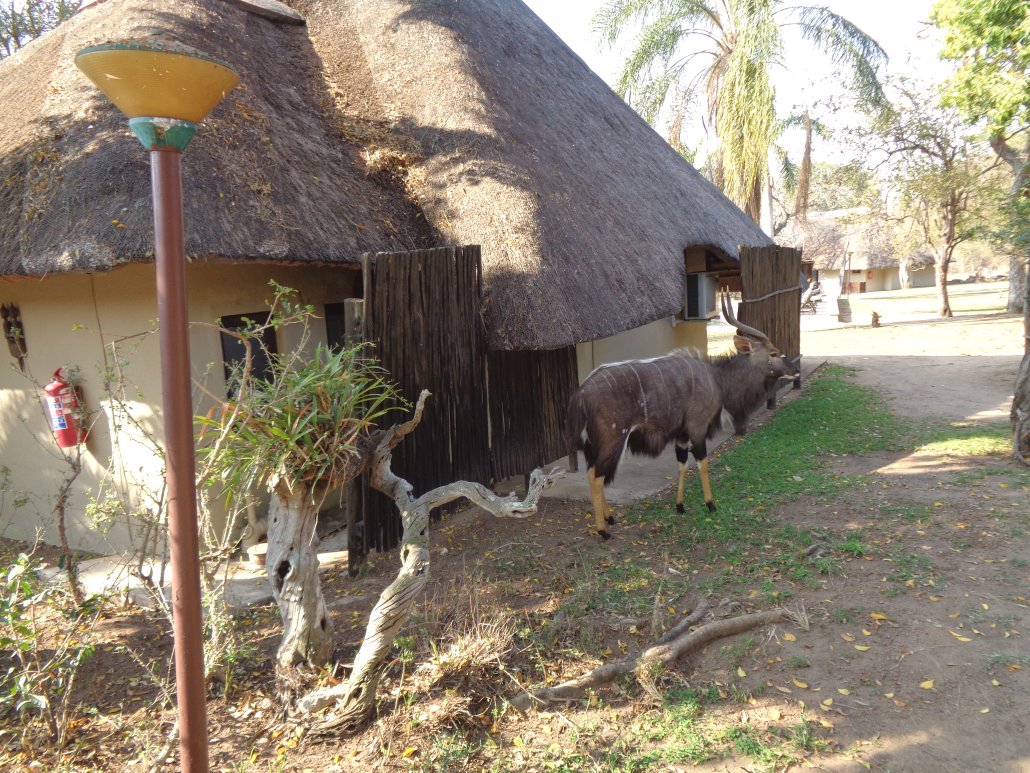
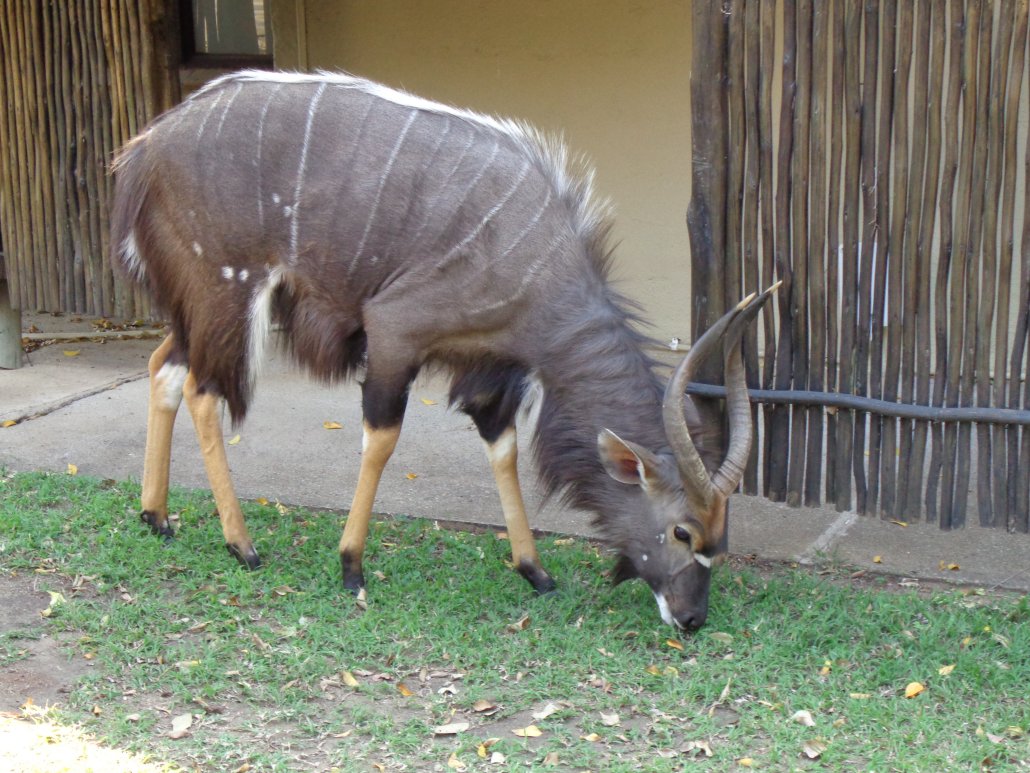
So you wake up at dawn and have coffee and biscuits on the verandah of the main
lodge. These Vervet monkeys are a constant presence around the breakfast area,
and the staff have to chase
them away. Then you get in a four-by-four with a ranger and a tracker and go for
a morning drive. We were told that the hippos like to stay submerged because
their skin is sensitive to the sun. The morning drive gets back about 10 a.m.,
and you have a very full breakfast/brunch.
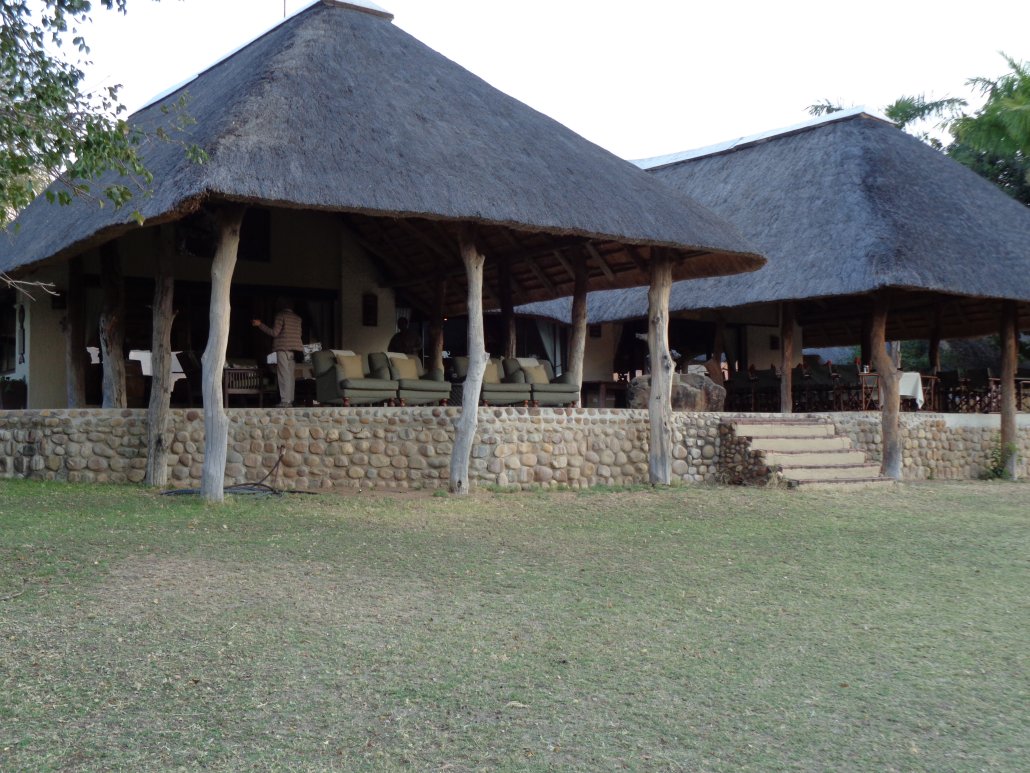
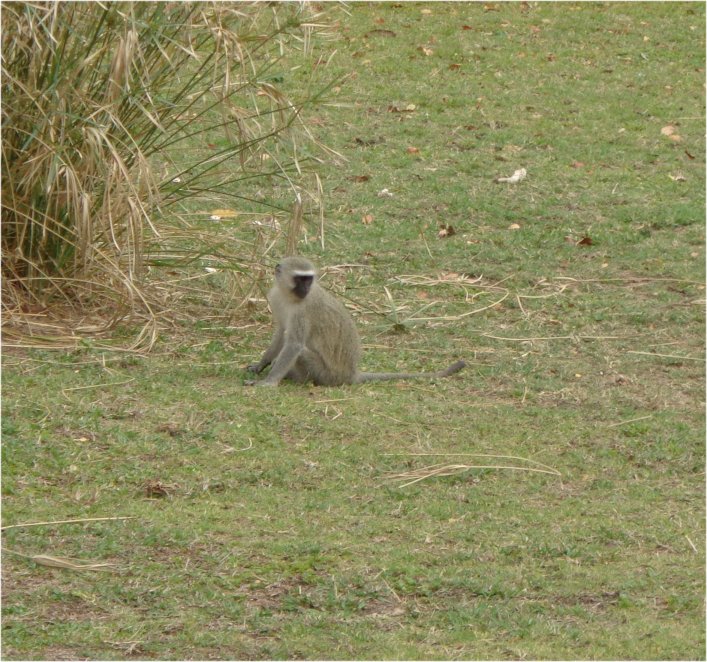
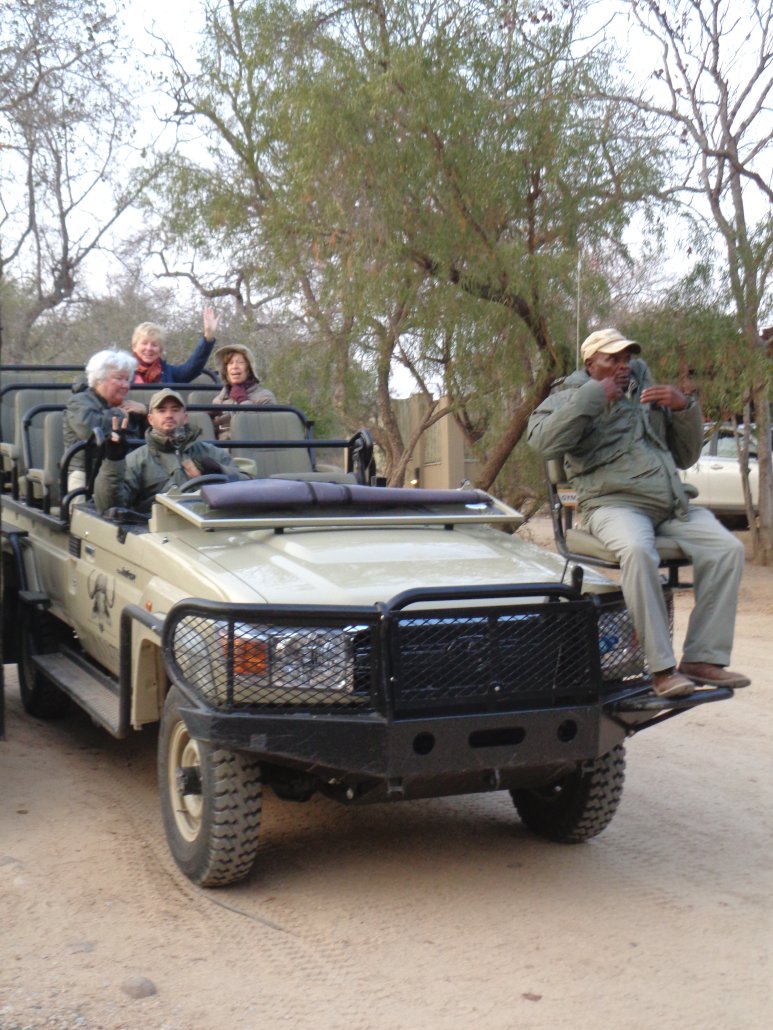
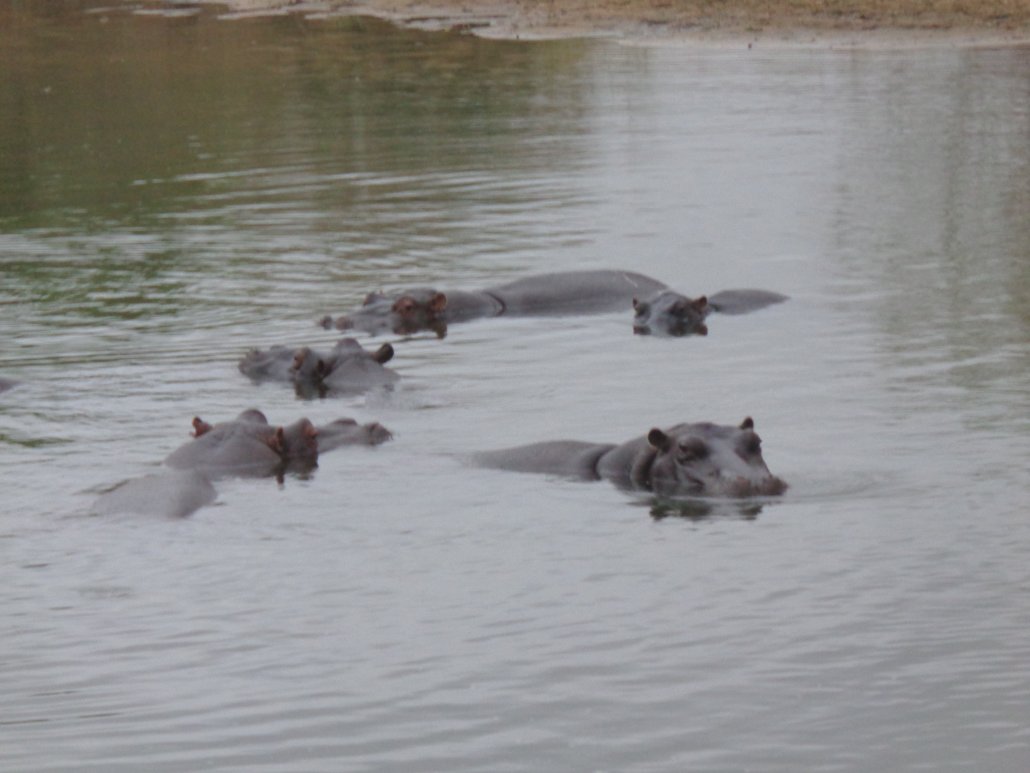
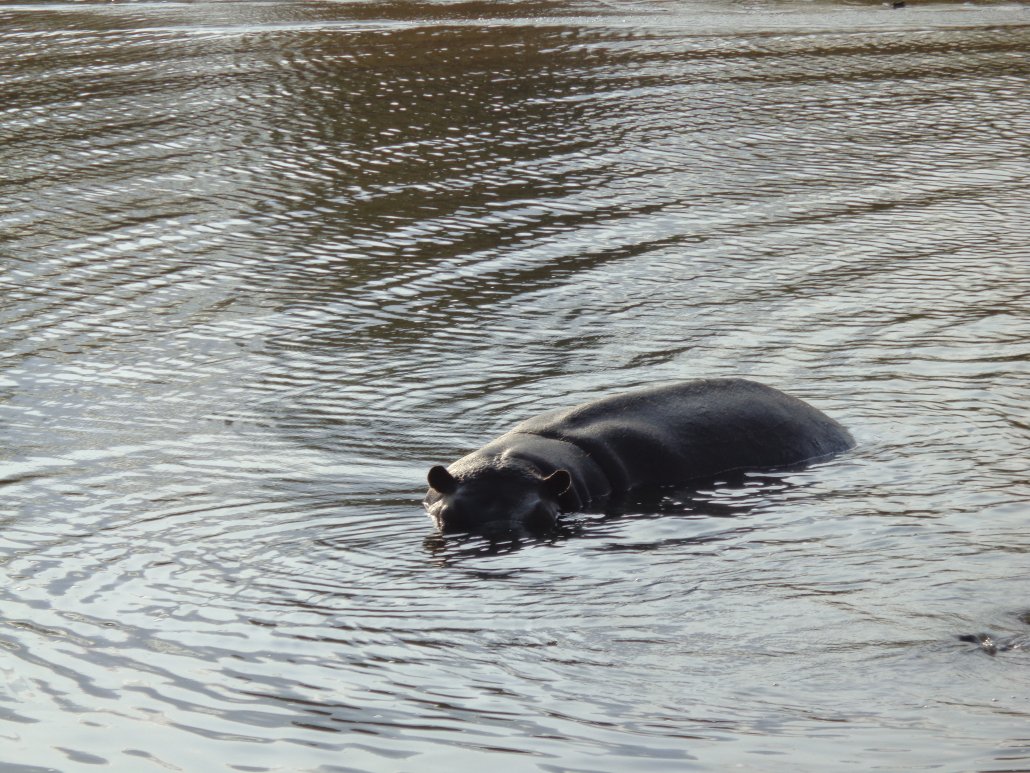
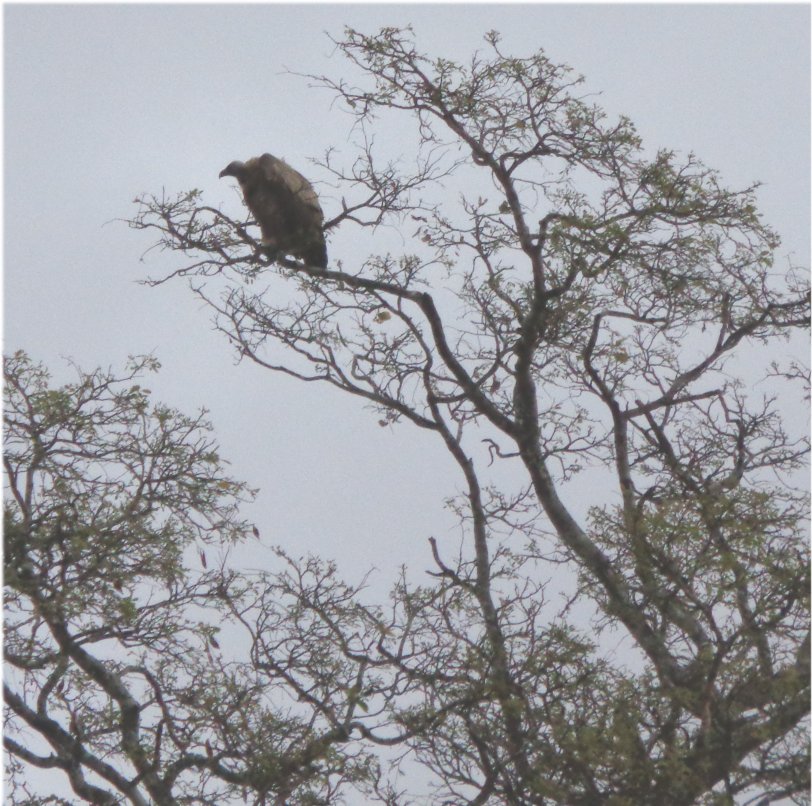
Afternoon game drive, first day: This is a post-office tree. In the old days, people would leave letters in here for the carrier and also pick them up. I was amazed at the ability of the four-by-four to go off-road. Our guides took us into the bush, and we got our first sighting of one of the big cats. Notice that the foliage is dry and parched? As I mentioned earlier, this is what winter, the dry season, looks like in the bush here. We had been told when planning that this is the best time for animal viewing, because the critters are out looking for water, and so it seems to be. This kind of jungle is called Bushveld; it will get green and lush soon, but South Africa does not get the tremendous rainfall that other parts of Africa do, so does not grow lots of humungous trees to form a canopy of leaves.
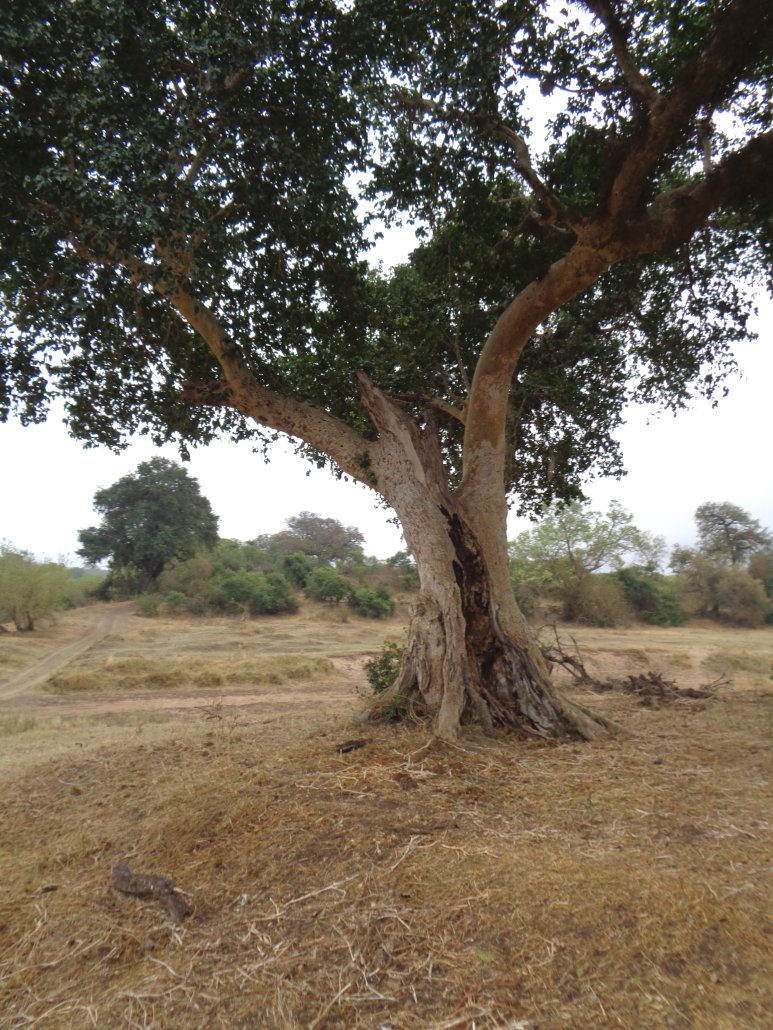
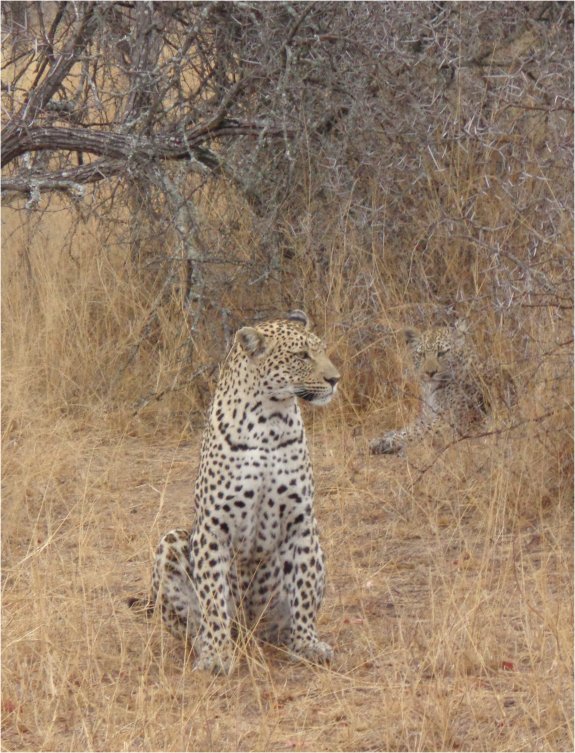
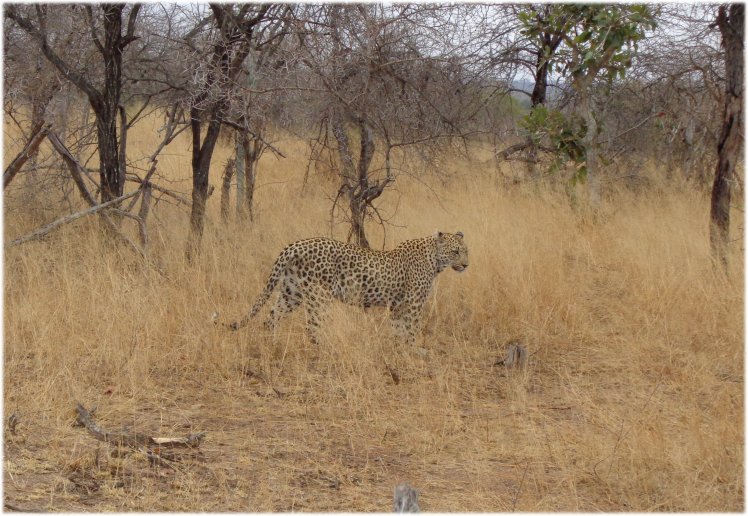
What I found most amazing about the elephants is that they have control of the muscles at the end of the trunk. They are able to use the end of the trunk to grasp food, as we use fingers. Maybe you are wondering how we can safely get so close to them? According to our guides, they have gotten used to the presence of vehicles. Also, they won't charge when they have the protection of a herd; it's when the animal is alone--old and tired and unable to keep up with the group--that it can become aggressive and dangerous. Same idea applies to the other big vegetarians, like hippo, rhino and Cape Buffalo.
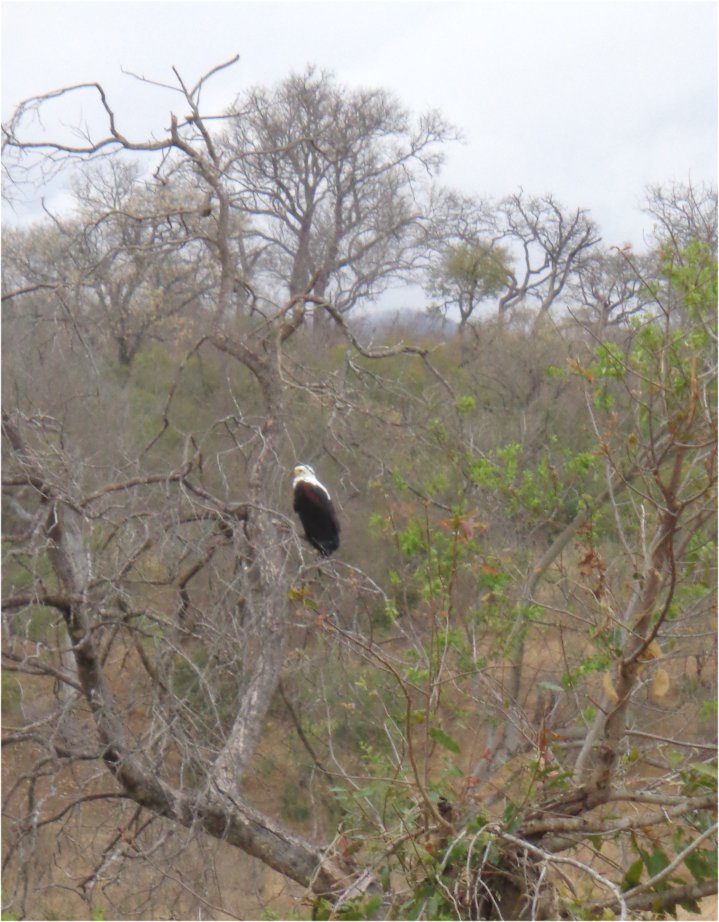
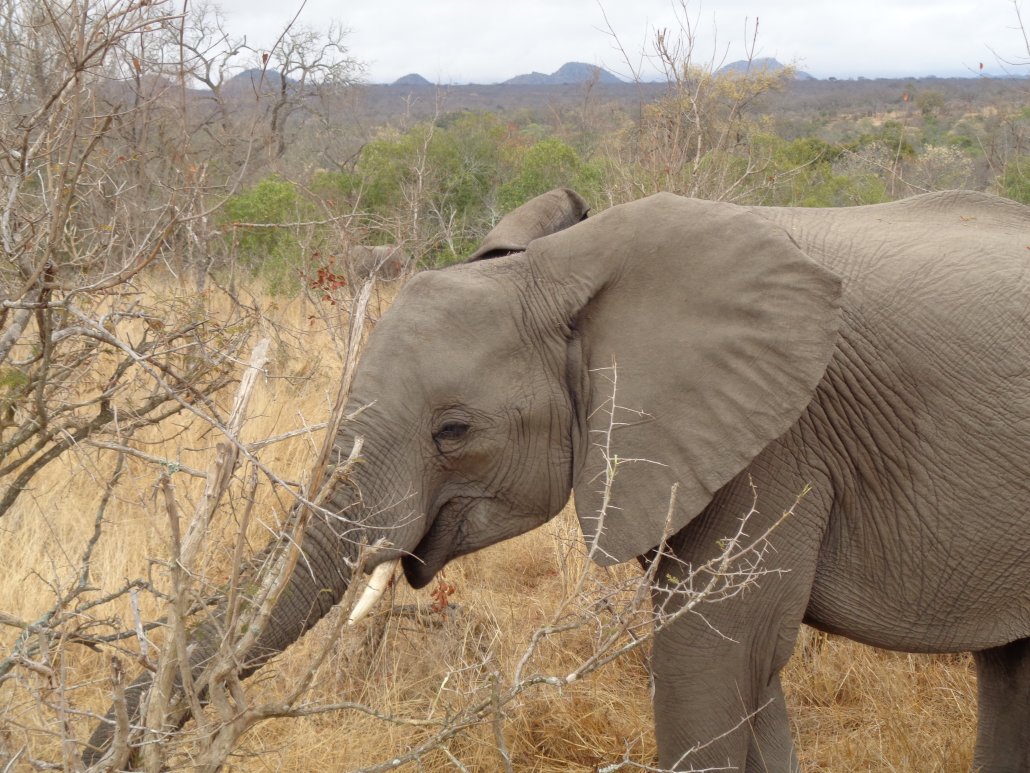
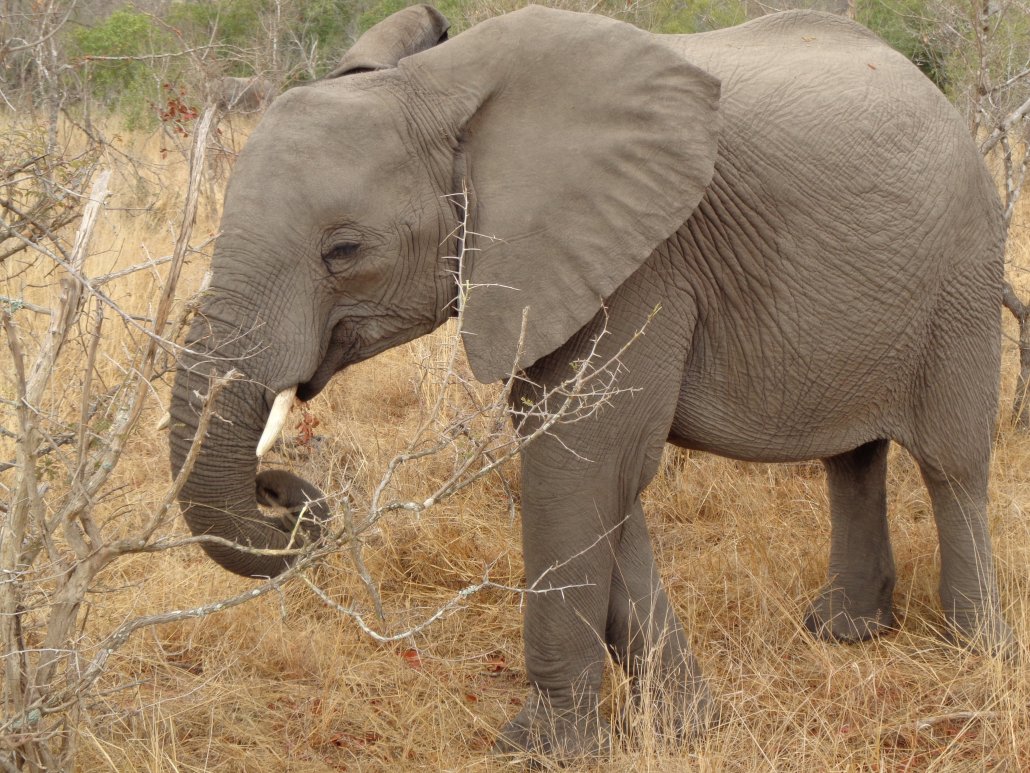
These are South African Wild Dogs. As cute as they are, don't be fooled: When
grown, they are extremely strong and fierce. So we were told, a pack will kill a
big cat by chasing it for miles to tire it out, then close for the attack.
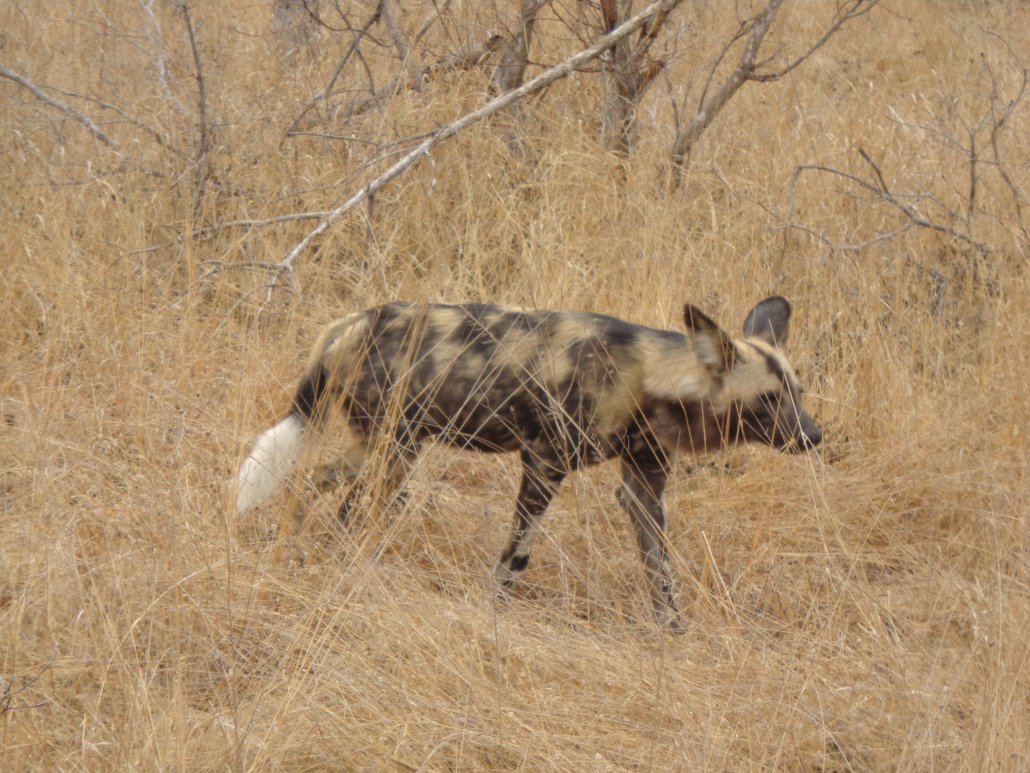
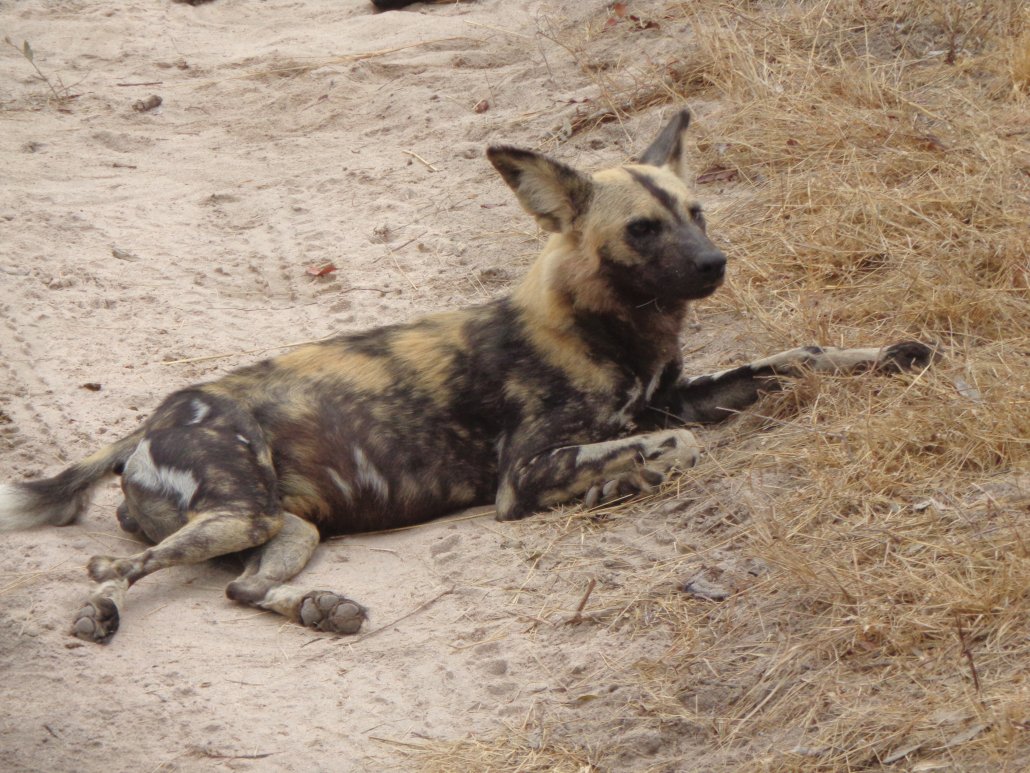
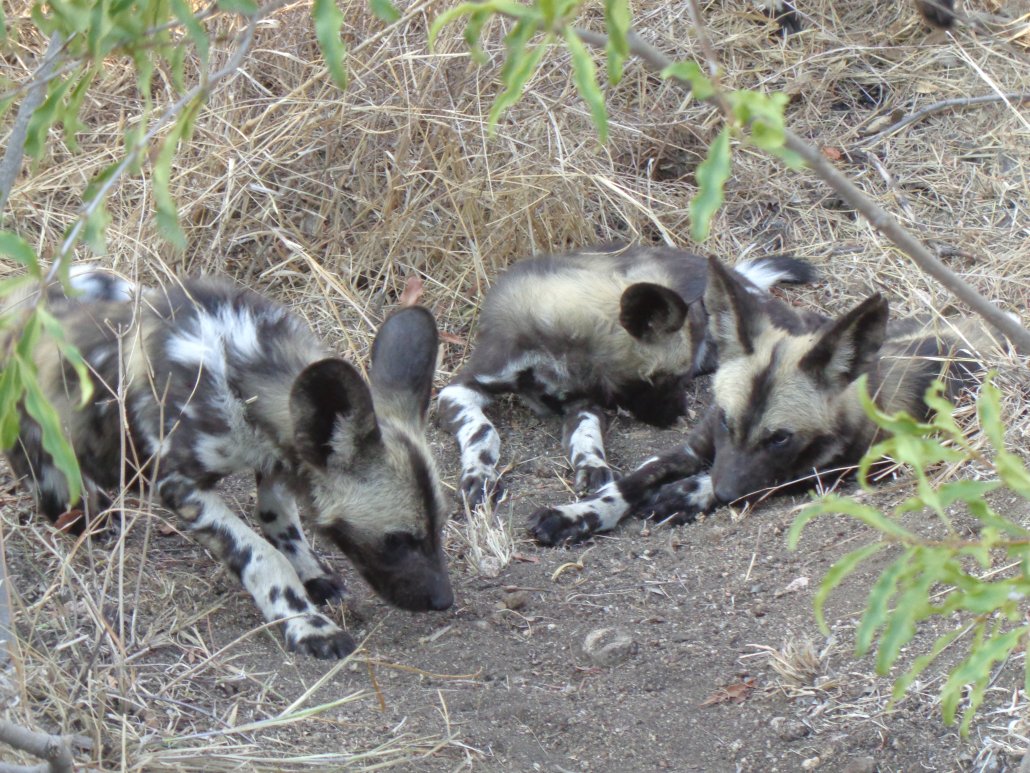
Second day: A variety of antelopes are a common site. I always get confused
between Impala, Nyala and Kudu. The males are the ones with horns. This was a
day for giraffes, as well.
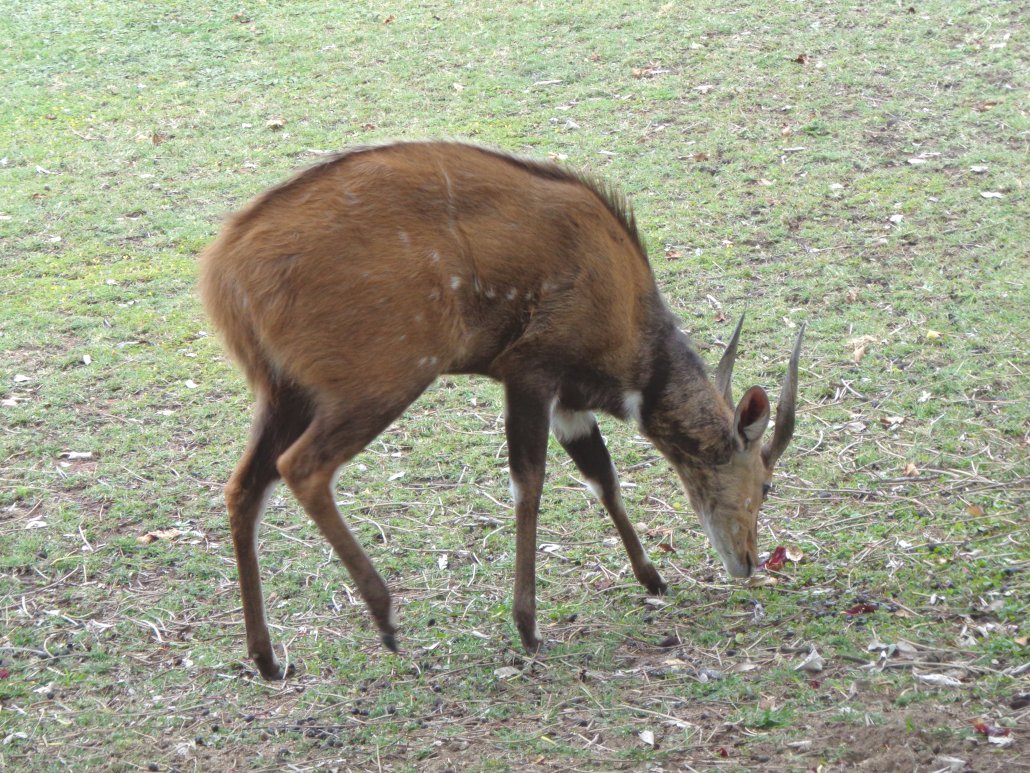
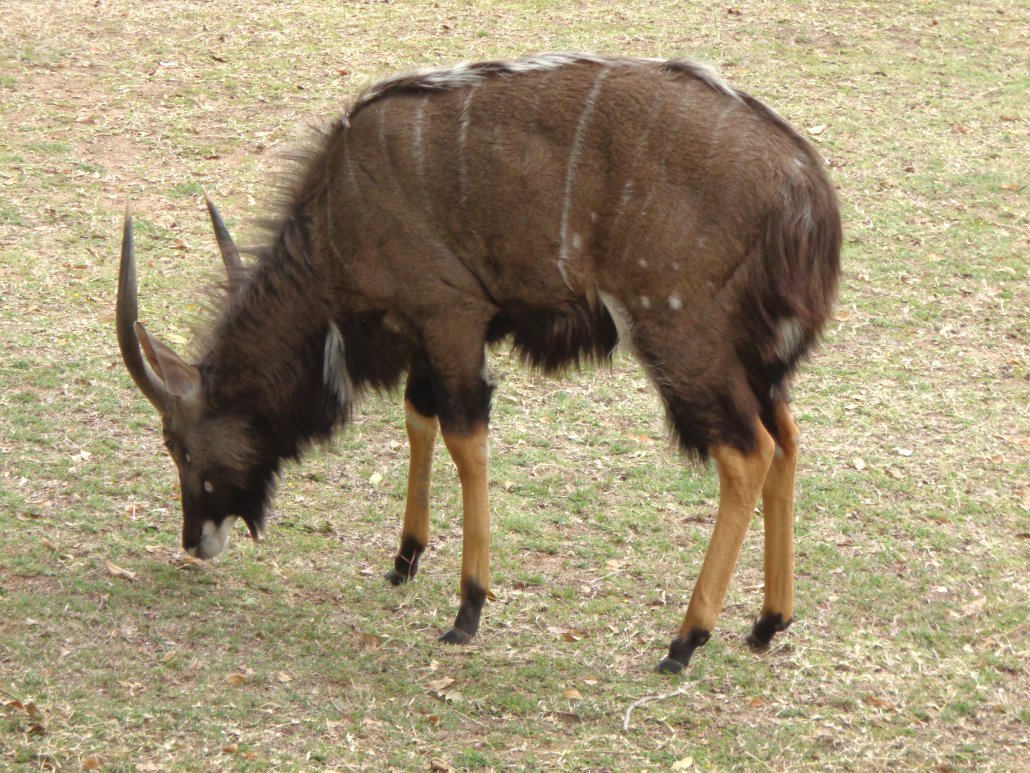
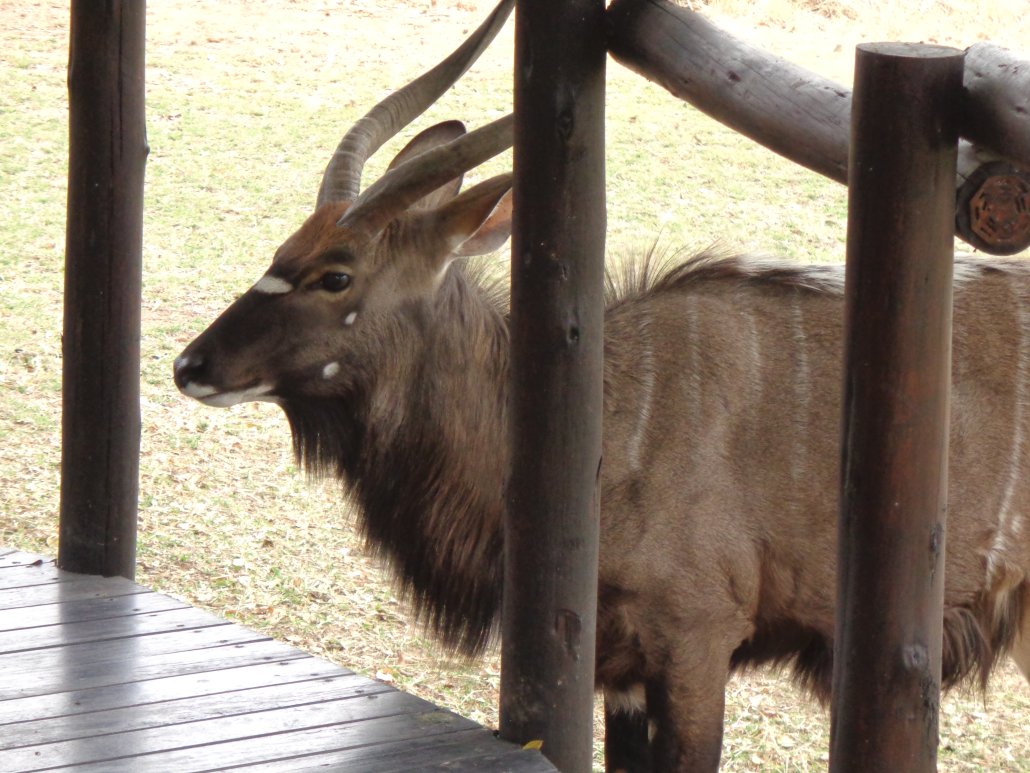
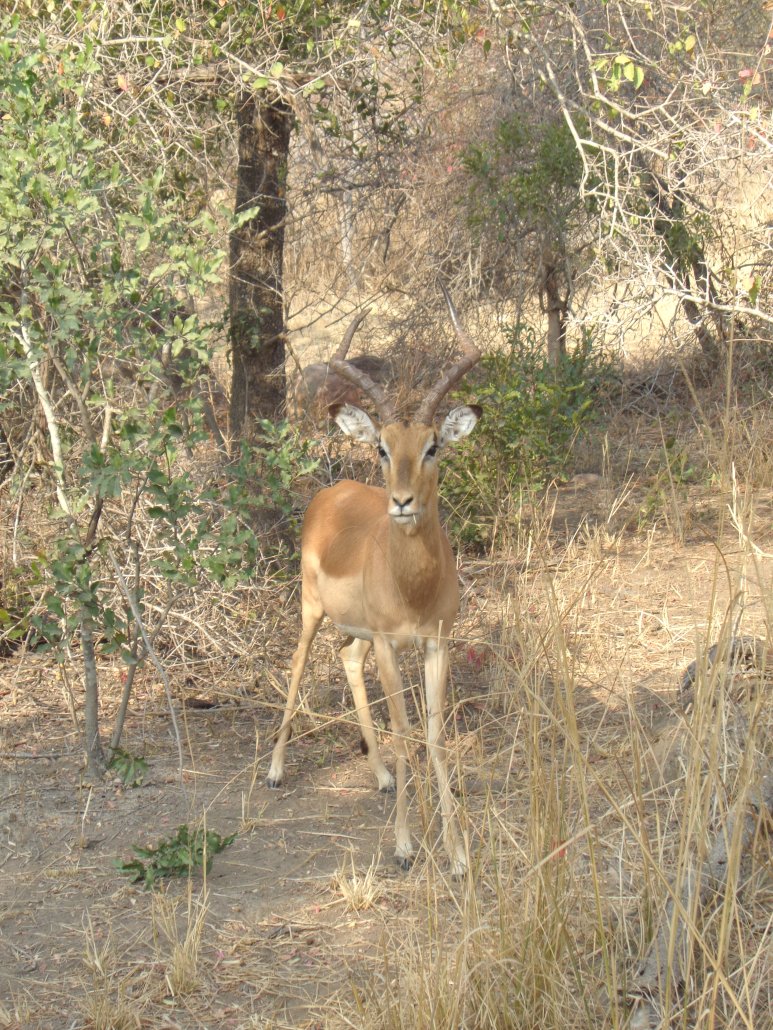
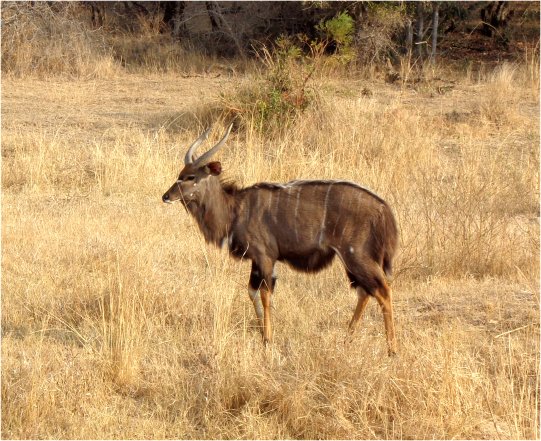
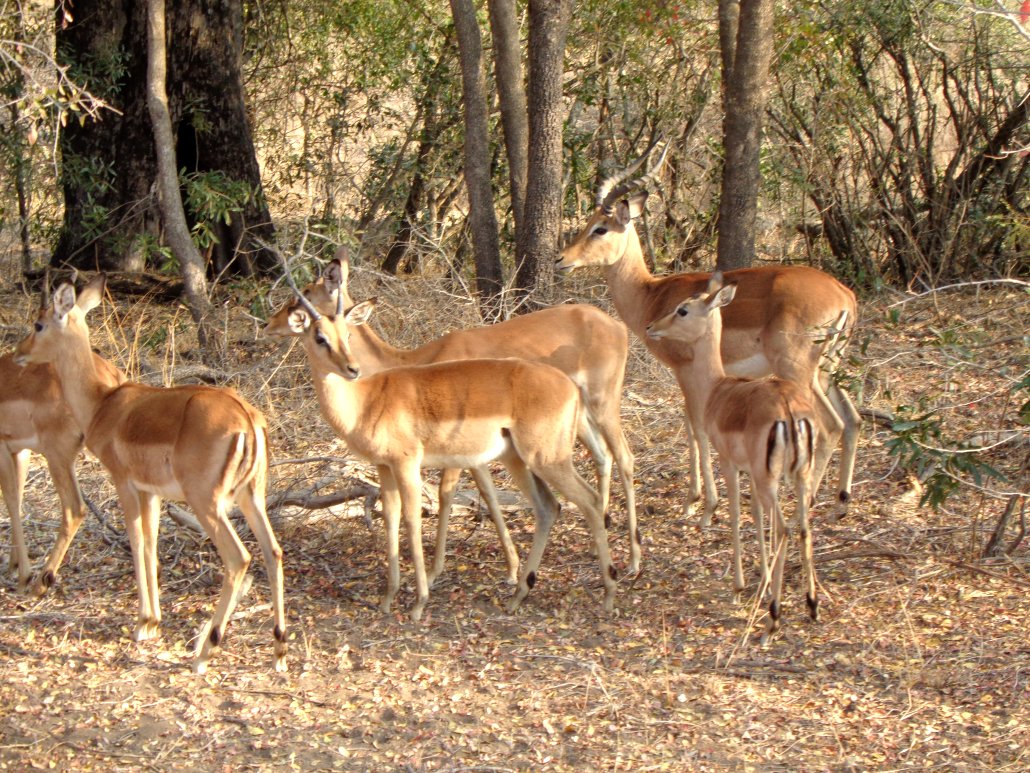
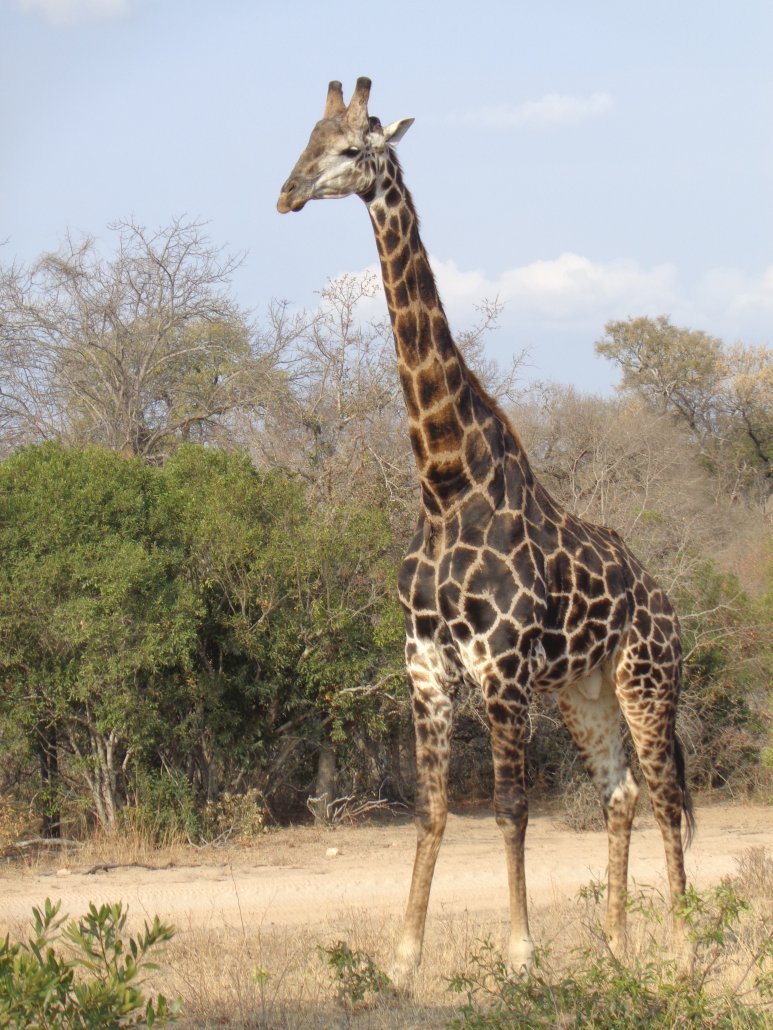

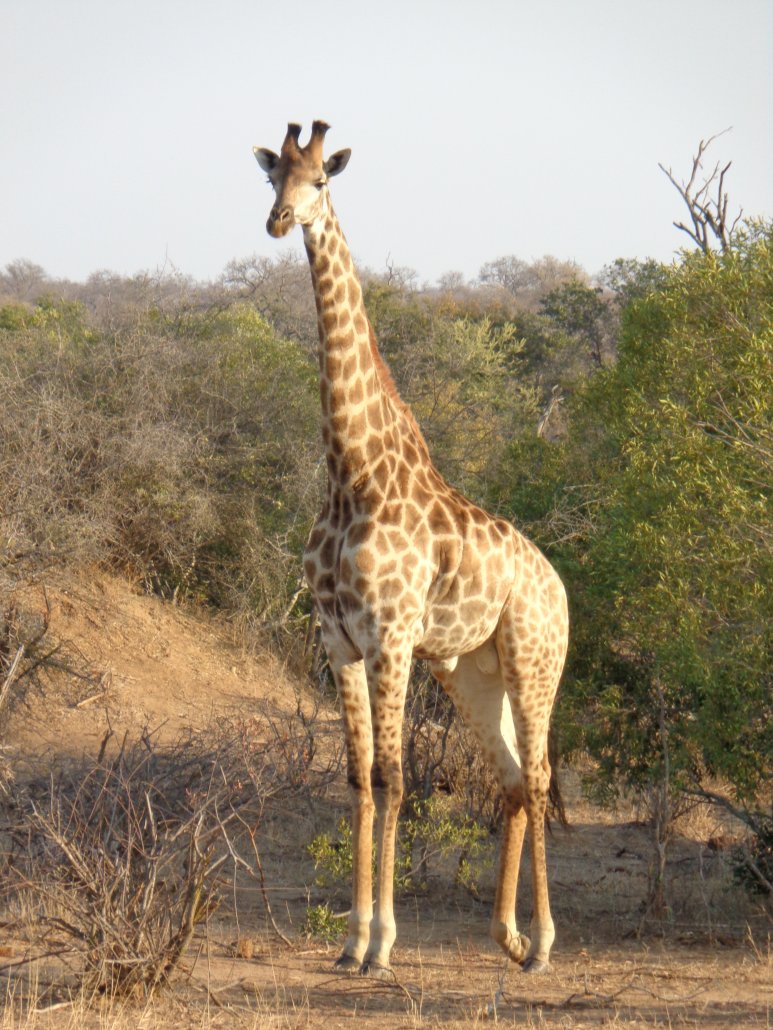
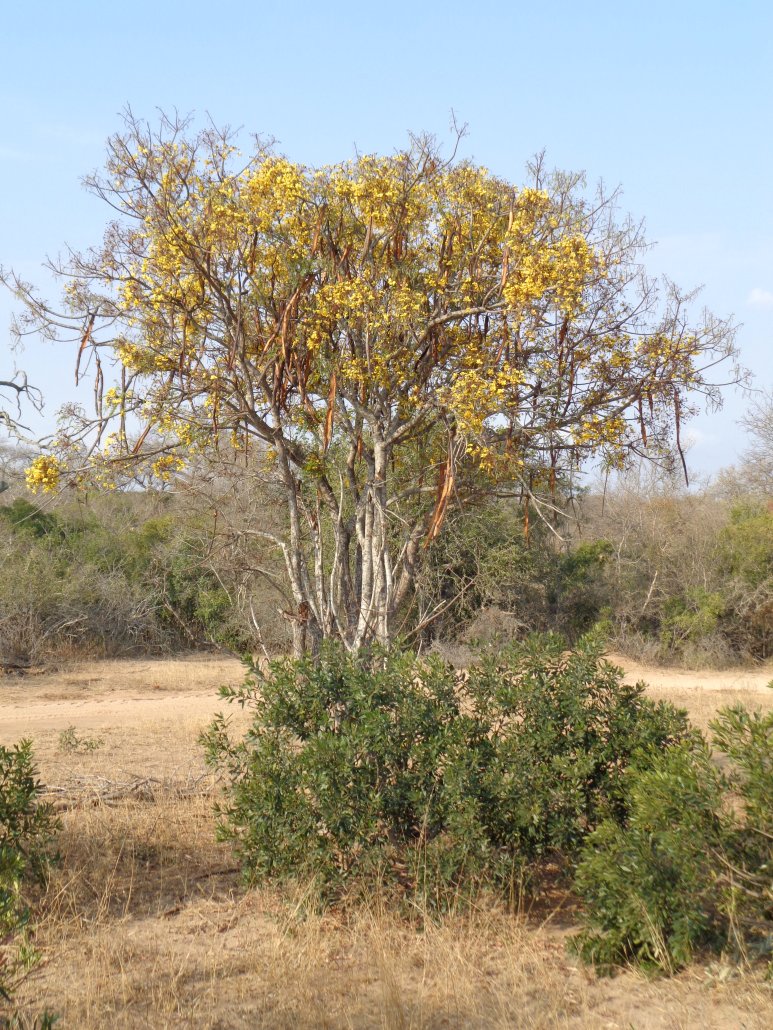

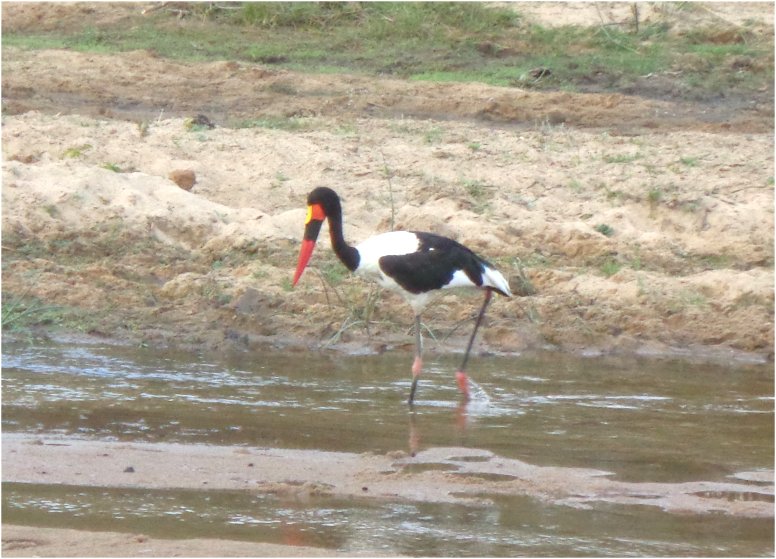
In this next sequence, a leopard has killed an impala and brought its catch up
into a tree to have lunch. Why go to all that trouble? Because the hunter knows
that scavengers--like this spotted hyena--are always waiting for a chance to
grab a bite. In fact, we saw the leopard let drop a part of its kill, and the
hyena jumped on it and ran off to feed. Later, we found a herd of Cape Buffalo,
a group of zebra and also white rhinoceros.
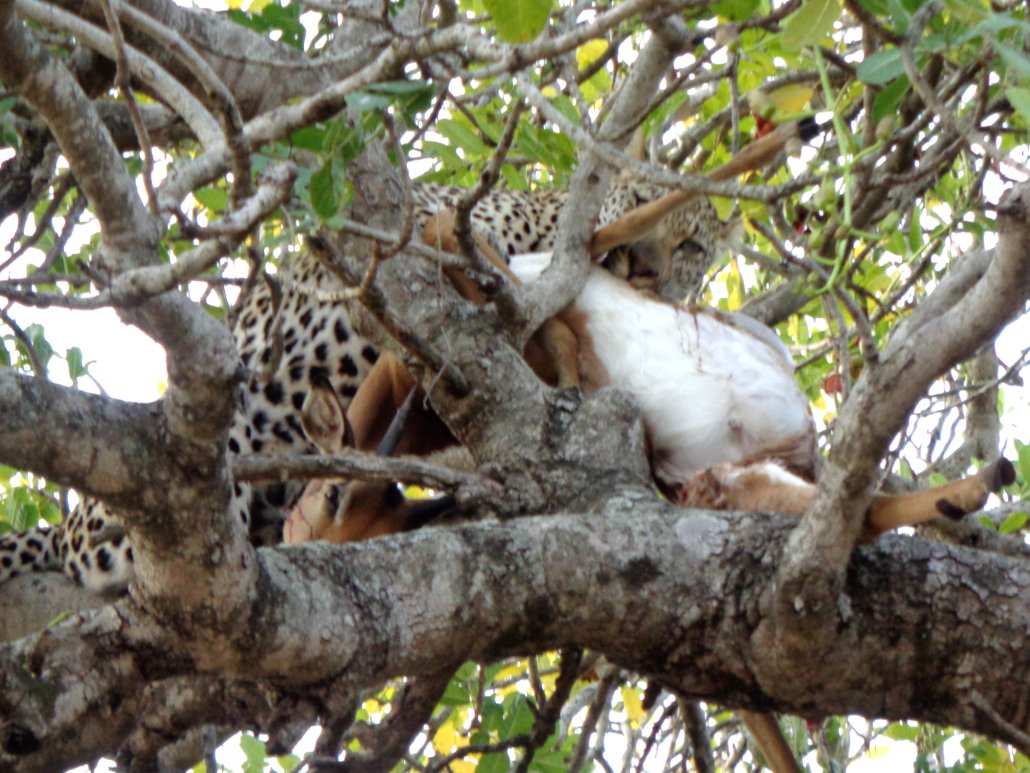
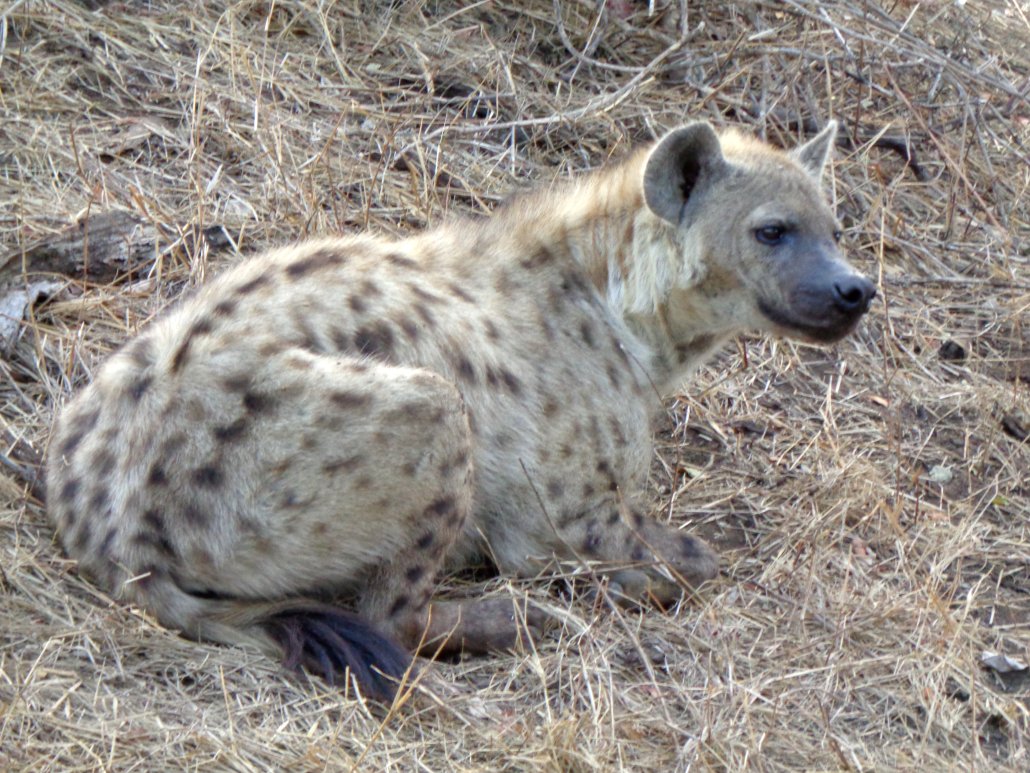

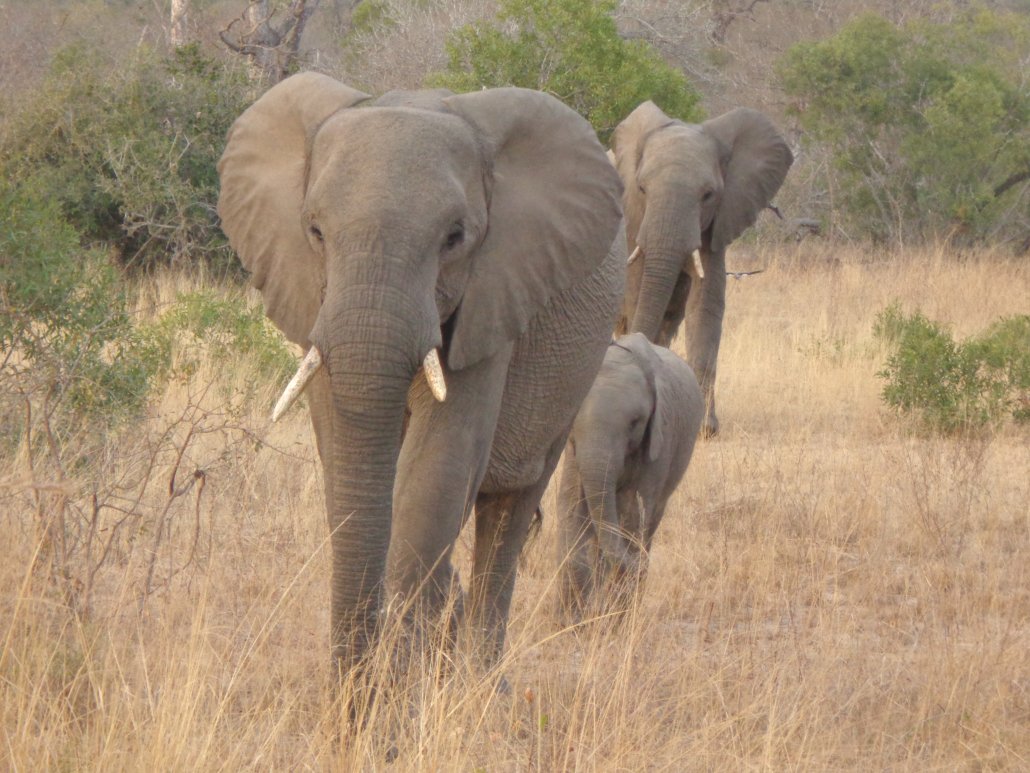
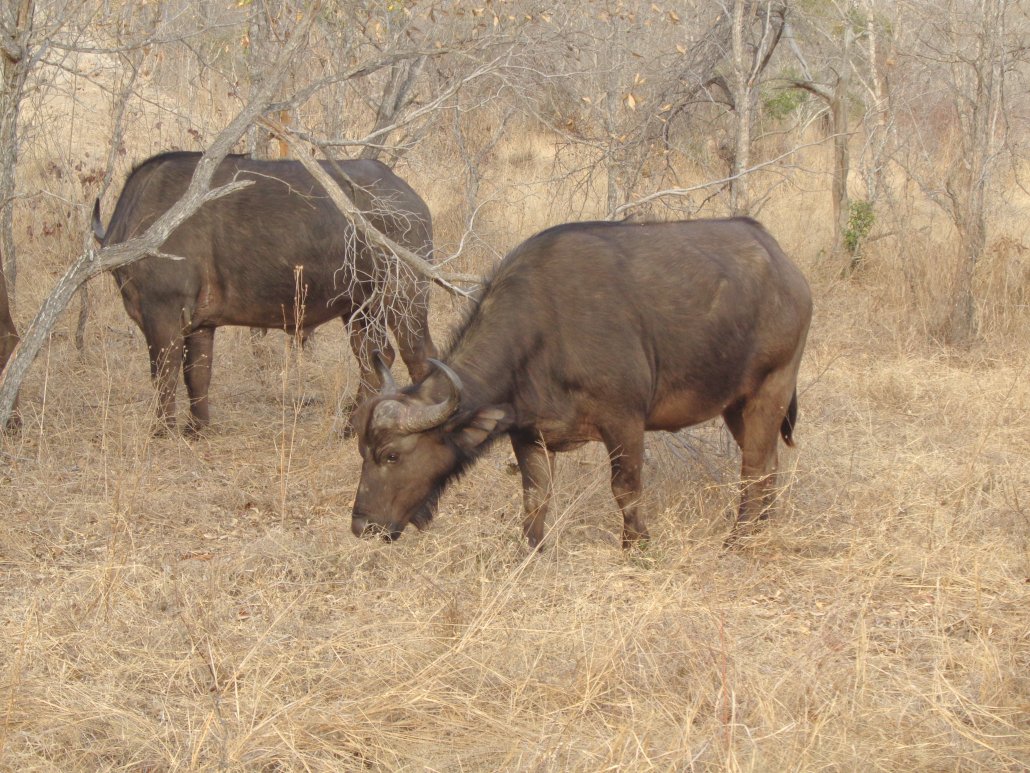
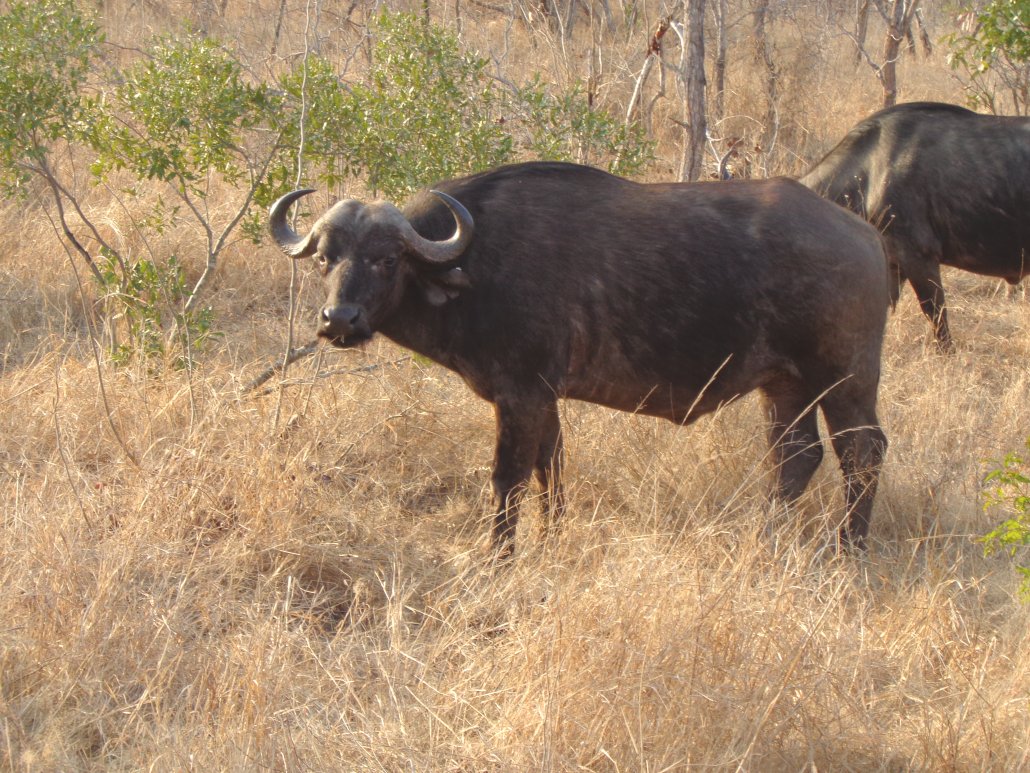
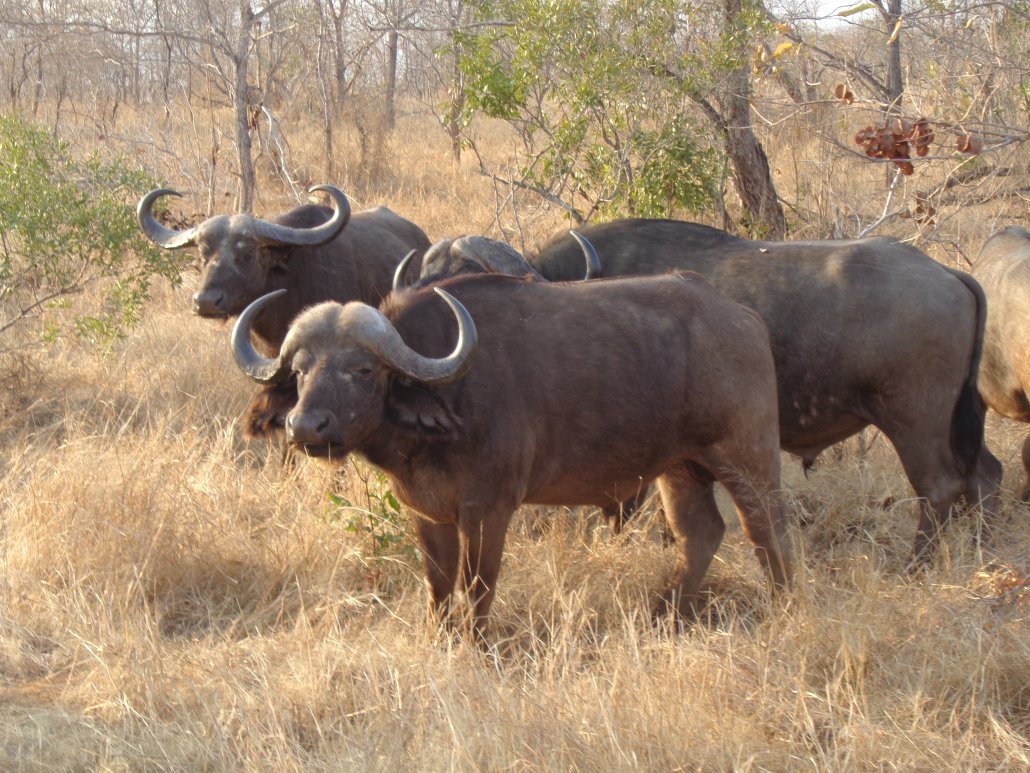


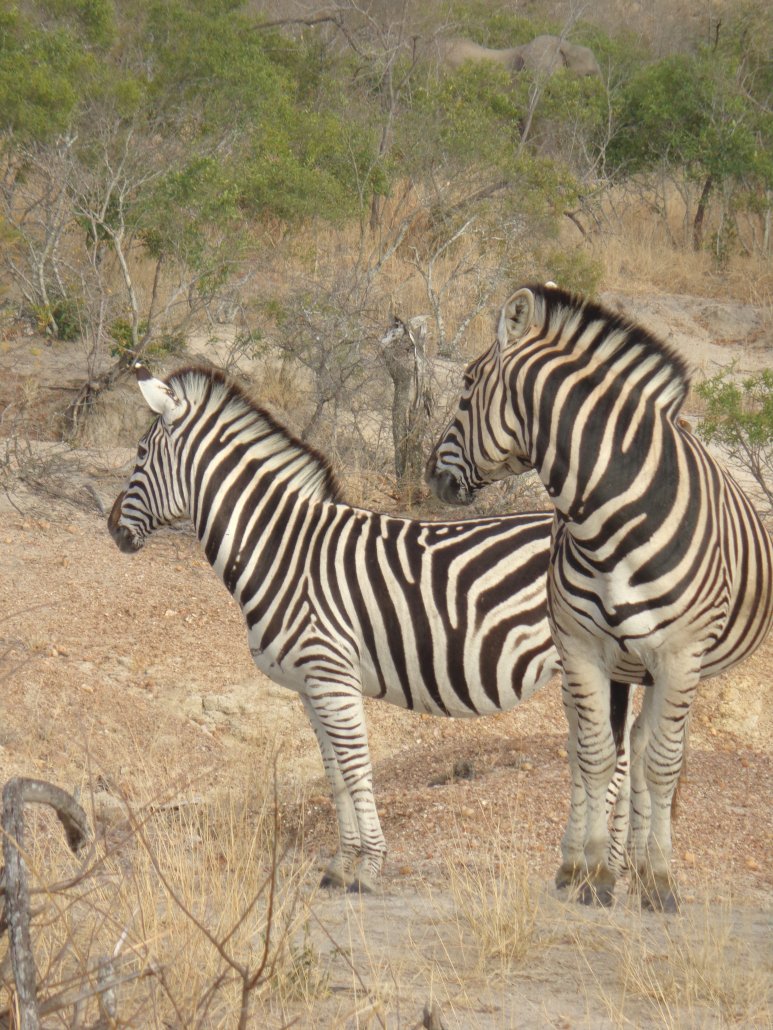

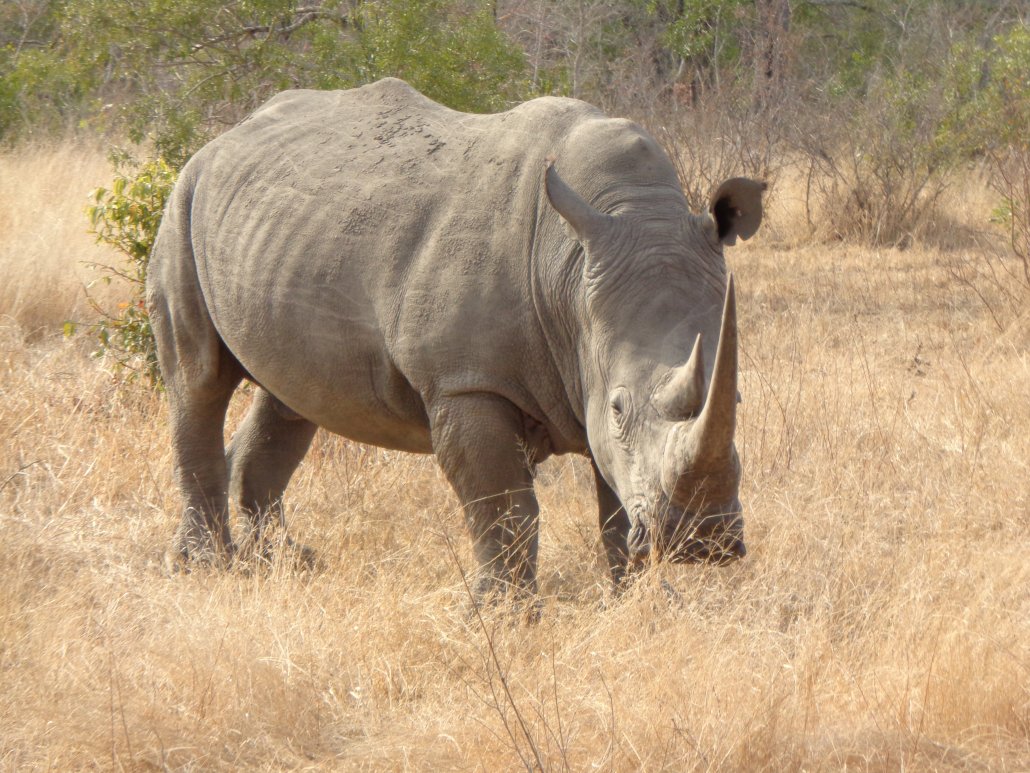



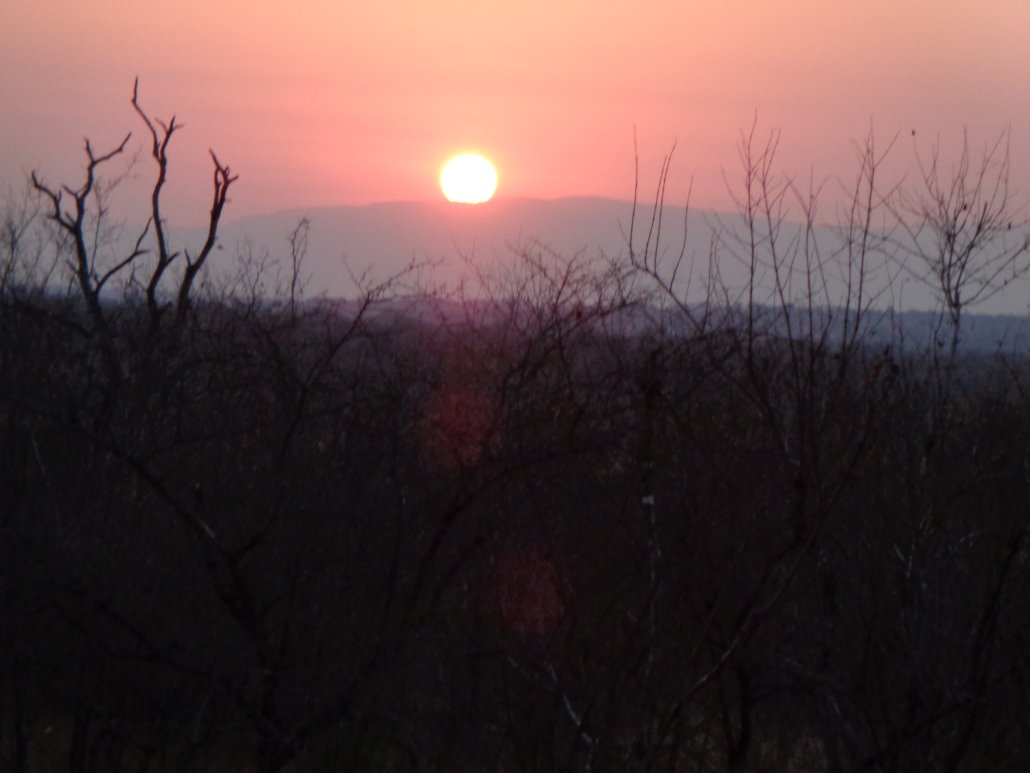
Third day: Probably our best sightings of big cat. We found the leopard sleeping off lunch. You can see her rub her nose in the buffalo droppings to mask the smell from her scent glands that would warn off prey. The last pic is a group of warthogs.
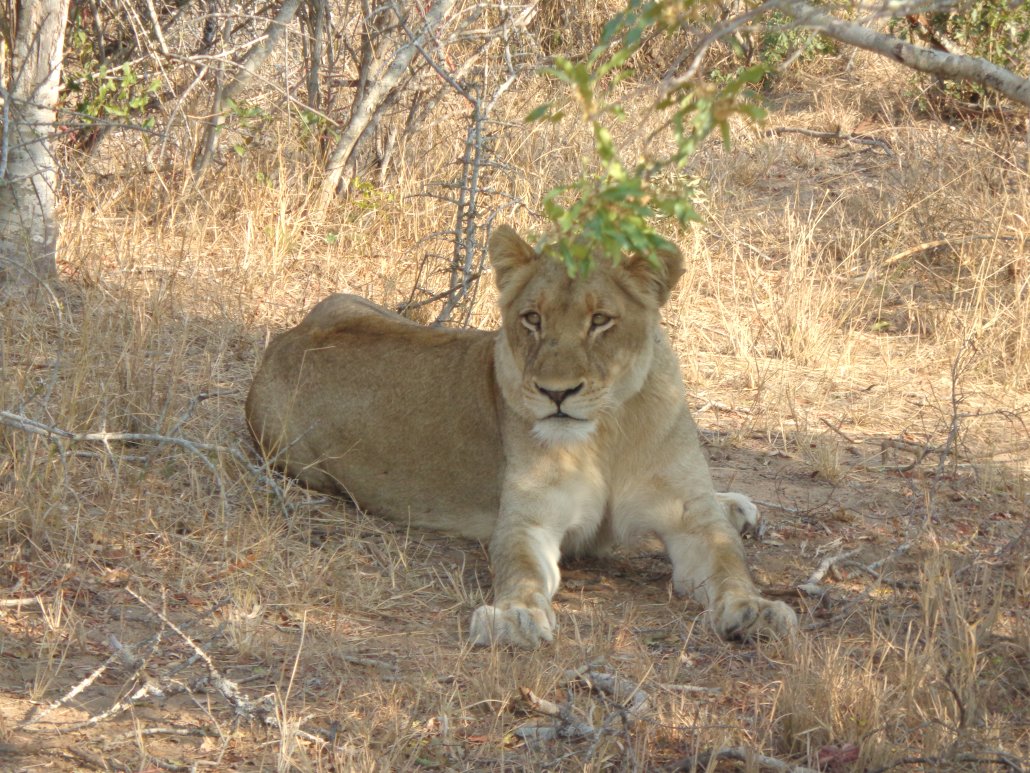
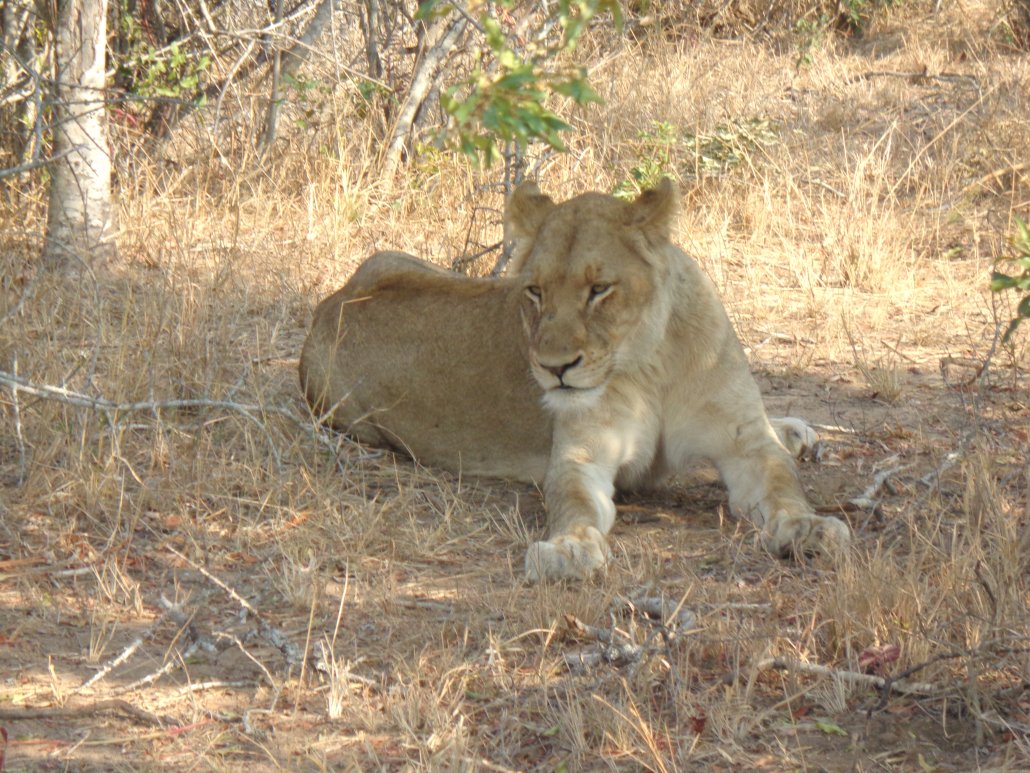
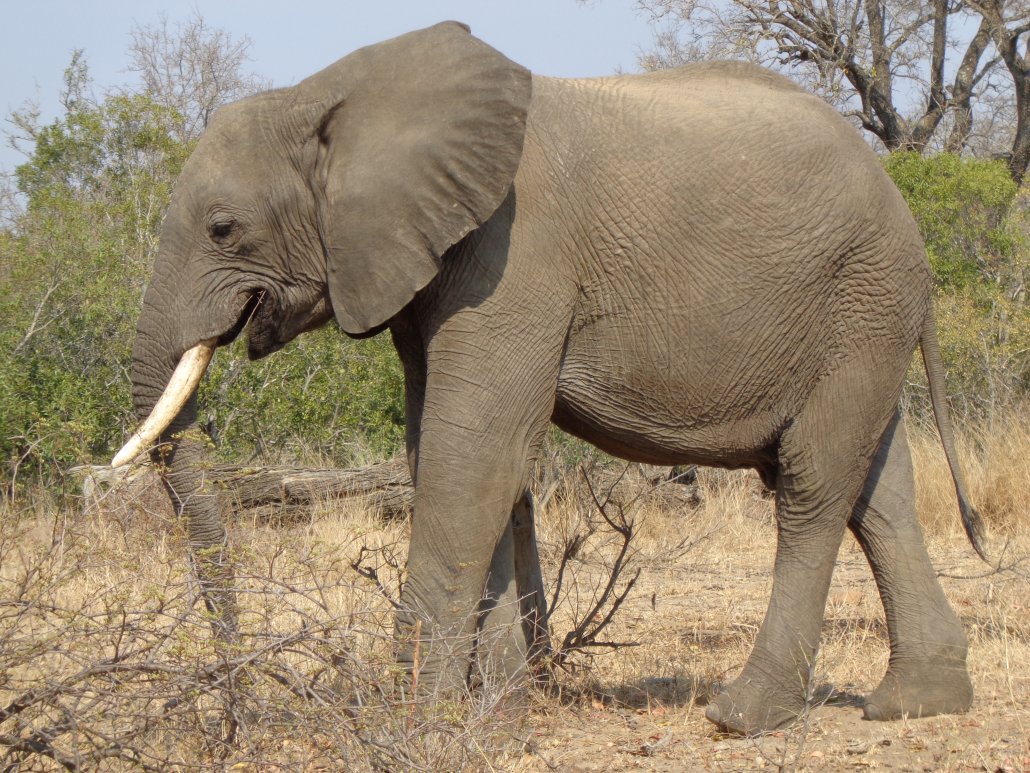
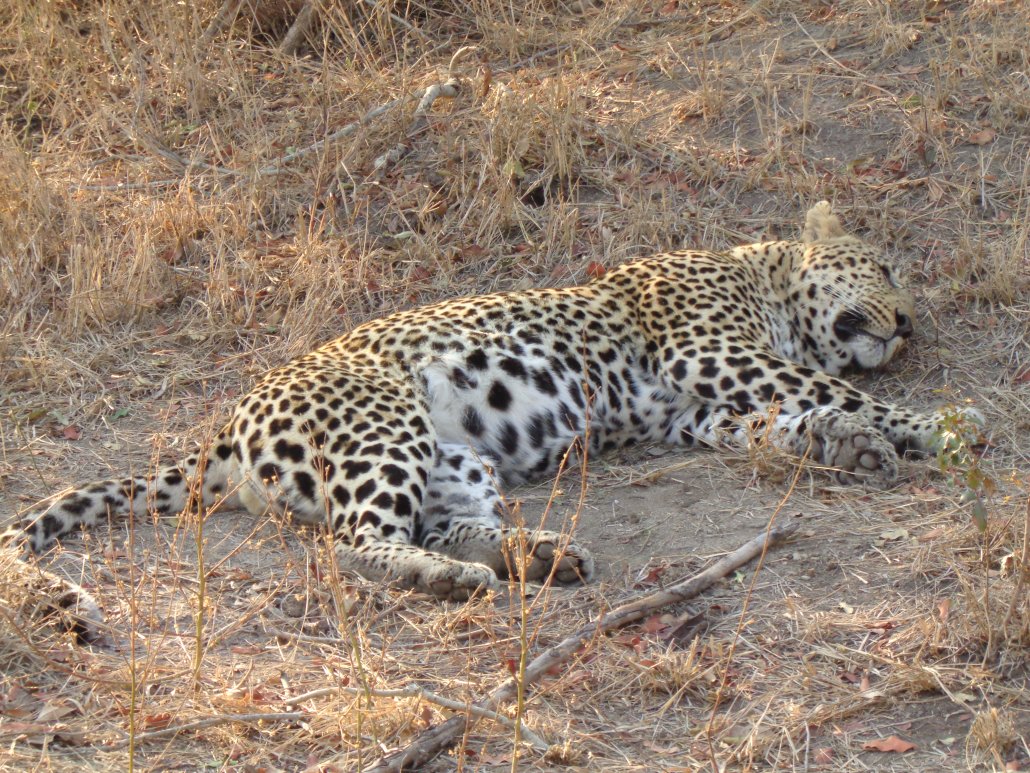

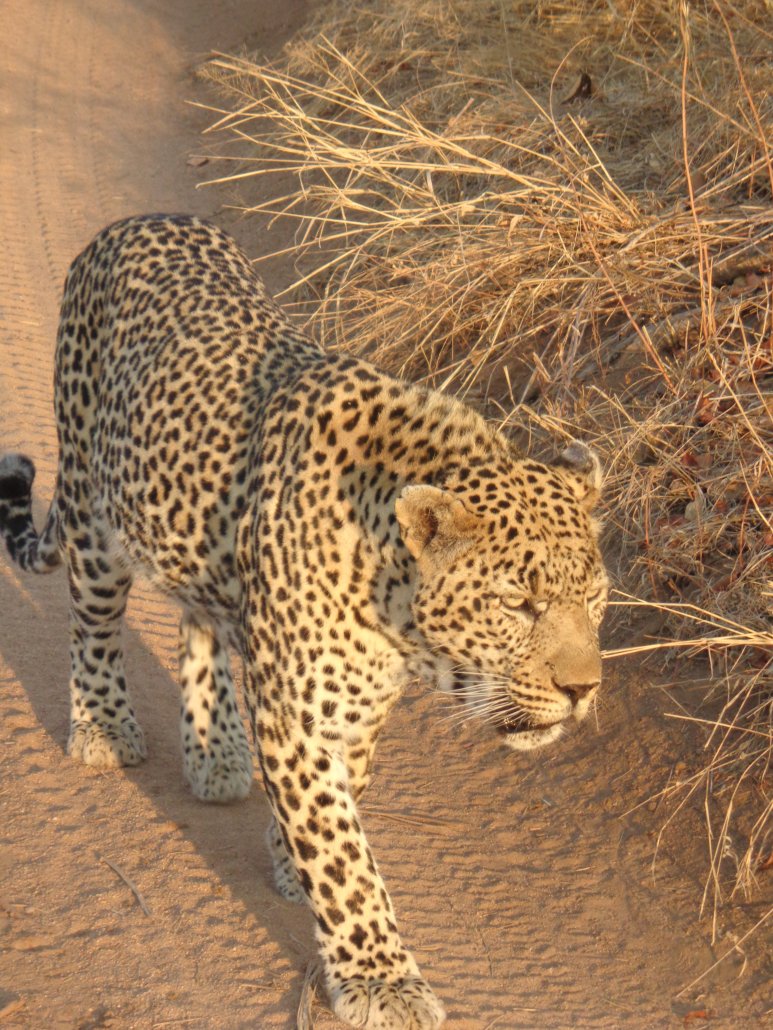

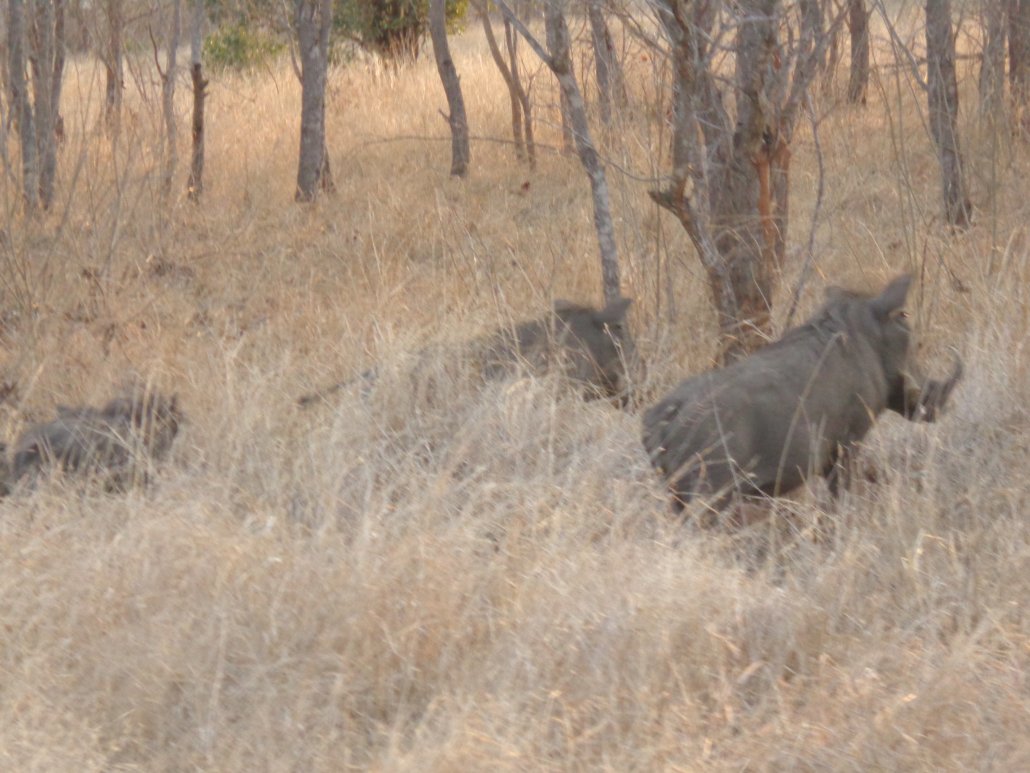
We spent our last few days in Nelspruit and Johannesburg ("Jo'burg" to the locals),
and were fortunate to meet Benjamin and Hayley Craig and Peter Cornell. My dumb,
I forgot to take pictures. Lovely people all, and Judy and I were glad for the
inside take on events in the country. We noticed that all of the people we met,
of all races, were open about discussing politics--a healthy sign. That said,
everybody was glad to be clear of the Apartheid days, but expressed worry over
the level of corruption in the present government.
I hope you enjoyed the tour as much as we did. My annual State Of The Cave
message will follow soon.
Regards
SD